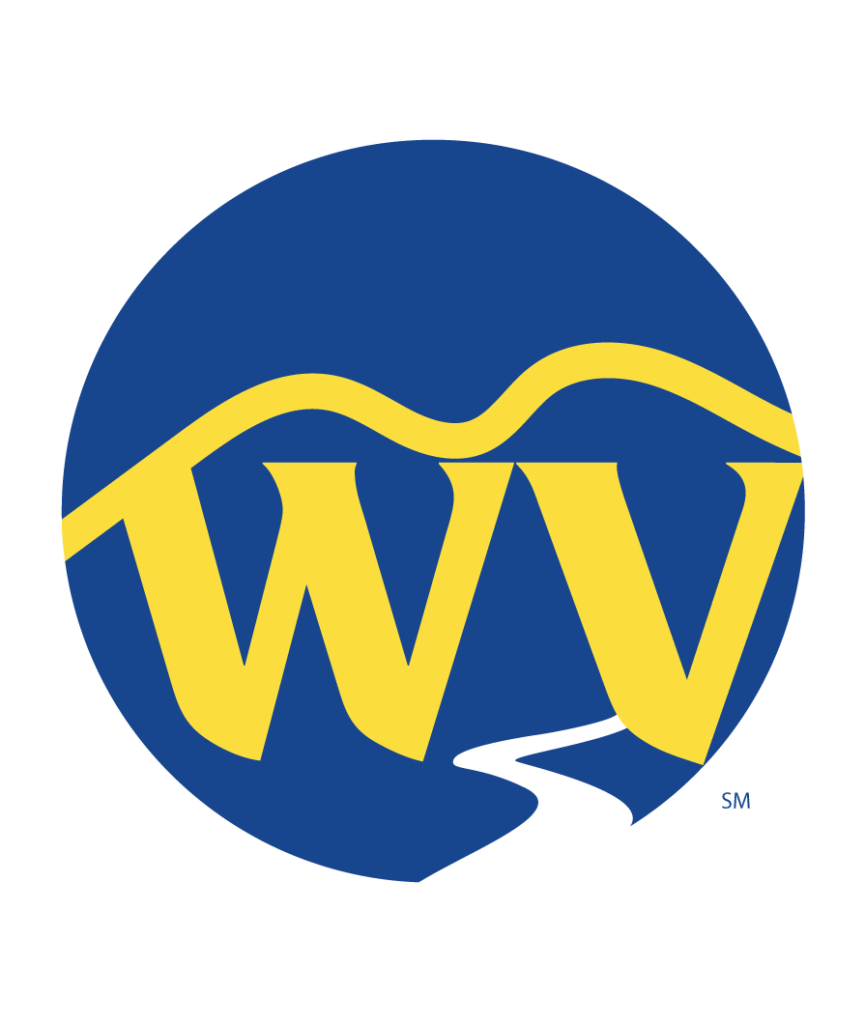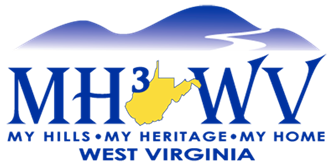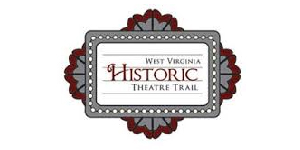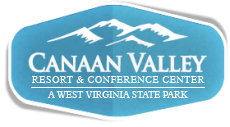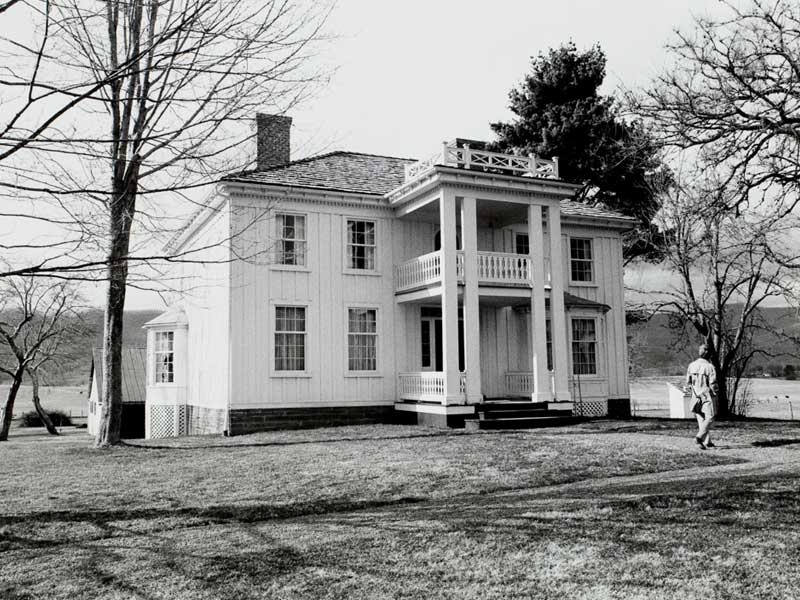Special Places in West Virginia
West Virginia Studies
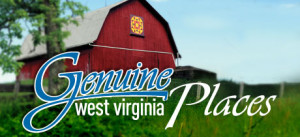
The following topics all have separate pages on this website – see the menu on the Home page:
- West Virginia’s State Parks and Forests
- West Virginia’s State Capitol Complex
- West Virginia’s Museums
- West Virginia’s Tourist Trains — including Cass Scenic Railroad, Durbin and Greenbrier Valley Railroad, Potomac Eagle, and Autumn Colors Express (on the Transportation page)
- West Virginia’s National Forests, National Parks, National Heritage Areas, National Wildlife Refuges, National Landmarks, Flood Control Dams, and other Natural Features.
<< Here are the topics on this page; Click to jump/scroll down >>
“West Virginia Tourism Regions”
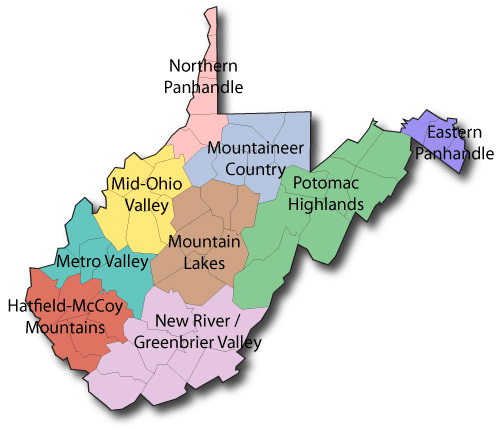
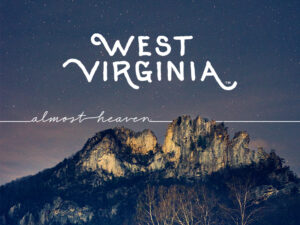 “West Virginia is the only state that lies completely within the Appalachian Mountain range, hence the nickname “the Mountain State.” Its mountainous topography varies, giving each travel region a distinct identity worth exploring. Indulge in the Eastern Panhandle’s warm springs that George Washington once enjoyed, said to have a variety of health benefits; climb rugged, steep mountains peaking at over 4,000 feet in the Potomac Highlands, including the state’s highest peak at 4,863 feet; and explore mountain towns that are so tucked away, the cultures of their early settlers still remain, like the Swiss town of Helvetia. From gentle rolling farmland to deep gorges and canyons, the unique experiences in each region are all connected by scenic drives on our winding, country roads.”
“West Virginia is the only state that lies completely within the Appalachian Mountain range, hence the nickname “the Mountain State.” Its mountainous topography varies, giving each travel region a distinct identity worth exploring. Indulge in the Eastern Panhandle’s warm springs that George Washington once enjoyed, said to have a variety of health benefits; climb rugged, steep mountains peaking at over 4,000 feet in the Potomac Highlands, including the state’s highest peak at 4,863 feet; and explore mountain towns that are so tucked away, the cultures of their early settlers still remain, like the Swiss town of Helvetia. From gentle rolling farmland to deep gorges and canyons, the unique experiences in each region are all connected by scenic drives on our winding, country roads.”
Explore West Virginia Tourism’s “Tourism Regions” Website – Brief descriptions of each tourism / tourist region with links to much more in depth information.
“West Virginia Waterfall Trail”
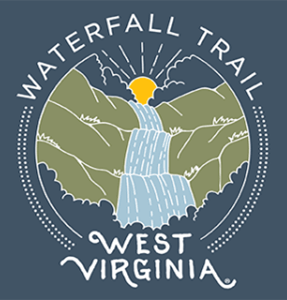
 “Tucked away in the mountains of West Virginia lie rugged landscapes with cascading falls. Whether rushing over plunging cliffs at great heights or flowing steadily along stream, waterfalls in Almost Heaven are nothing short of jaw-dropping enchantment. . . With over 200 waterfalls found across the state, the more than two dozen cascades featured along the trail are the perfect way to kick off a summer of waterfall hunting. The trail includes well-known falls such as Blackwater and Sandstone, but also features hidden gems like Finn’s in the New River Gorge National Park & Preserve and Drawdy in Boone County. Some, like Cathedral, tower above the valley floor, while others span wide rivers. . .”
“Tucked away in the mountains of West Virginia lie rugged landscapes with cascading falls. Whether rushing over plunging cliffs at great heights or flowing steadily along stream, waterfalls in Almost Heaven are nothing short of jaw-dropping enchantment. . . With over 200 waterfalls found across the state, the more than two dozen cascades featured along the trail are the perfect way to kick off a summer of waterfall hunting. The trail includes well-known falls such as Blackwater and Sandstone, but also features hidden gems like Finn’s in the New River Gorge National Park & Preserve and Drawdy in Boone County. Some, like Cathedral, tower above the valley floor, while others span wide rivers. . .”
Explore West Virginia Tourism’s “Waterfall Trail” Website
“West Virginia Historic Theatre Trail”
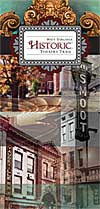 “The West Virginia Historic Theatre Trail, developed by the State Historic Preservation Office and Preservation Alliance of West Virginia, has been financed with a Preserve America grant.”
“The West Virginia Historic Theatre Trail, developed by the State Historic Preservation Office and Preservation Alliance of West Virginia, has been financed with a Preserve America grant.”
“Historic Theatres Enrich Our Communities”
Includes: Labelle/South Charleston; Capitol Center/Charleston; Alpine/Ripley; Keith Albee/Huntington (7:30/2014/Charleston Gazette)
“The Keith-Albee Theatre”
“My video homage to what I believe to be one of the most beautiful theatres in America today. And having it in my hometown of Huntington, WV makes it even better.” (4:21/2009/Scottiepoo5612)
“West Virginia Music Hall of Fame” – Kanawha Co.
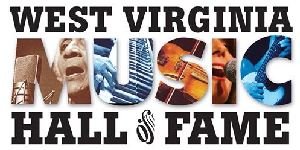 “The West Virginia Music Hall of Fame is a non-profit organization dedicated to documenting and preserving the rich and lasting contributions West Virginians have made to all genres of music. The Hall of Fame’s mission is to recognize the many important musicians who have helped shape the rich spectrum of American music from country, classical, and jazz to rock, R&B, gospel, and traditional. The WVMHoF’s mission also includes establishing a permanent facility to house the Hall of Fame and an accompanying museum to exhibit and archive recordings and memorabilia.”
“The West Virginia Music Hall of Fame is a non-profit organization dedicated to documenting and preserving the rich and lasting contributions West Virginians have made to all genres of music. The Hall of Fame’s mission is to recognize the many important musicians who have helped shape the rich spectrum of American music from country, classical, and jazz to rock, R&B, gospel, and traditional. The WVMHoF’s mission also includes establishing a permanent facility to house the Hall of Fame and an accompanying museum to exhibit and archive recordings and memorabilia.”
<<Additional information about the West Virginia Music Hall of Fame is on the Music / Dance page>>
Explore “West Virginia Music Hall of Fame” Website
“Mountain Music Trail”
“Promoting and presenting the traditional music, dance, and folkways of the Allegheny Mountain region.”
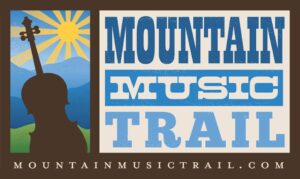 “Promoting cultural tourism and sustainable economic development near the Highway 219 corridor in Monroe, Greenbrier, Pocahontas, Randolph and Tucker counties; and sharing a cultural experience that brings together visitors and residents alike, to enjoy and participate in traditional mountain folkways.
“Promoting cultural tourism and sustainable economic development near the Highway 219 corridor in Monroe, Greenbrier, Pocahontas, Randolph and Tucker counties; and sharing a cultural experience that brings together visitors and residents alike, to enjoy and participate in traditional mountain folkways.
<<See the “Mountain Arts District Website” below for information about the Mountain Music Trail>>
“The Mountain Music Trail is a diverse group who are dedicated to:
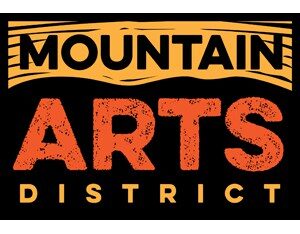 Promoting and presenting the traditional music, dance, and folkways of the Allegheny Mountain region;
Promoting and presenting the traditional music, dance, and folkways of the Allegheny Mountain region;- Promoting cultural tourism and sustainable economic development near the Highway 219 corridor in Monroe, Greenbrier, Pocahontas, Randolph and Tucker counties; and
- Sharing a cultural experience that brings together visitors and residents alike, to enjoy and participate in traditional mountain folkways.
Our vision is ‘To promote, present, and sustain opportunities for engagement in the authentic mountain music traditions of West Virginia.’ “
Explore Mountain Arts District’s “Mountain Music Trail” website to continue reading
“Mountain Dance Trail”
“All join hands and make that wheel, the more you dance the better you feel.”
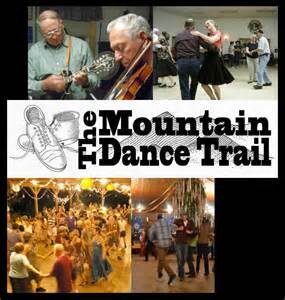
 “The Mountain Dance Trail, a statewide heritage tourism project of the Augusta Heritage Center of Davis and Elkins College, celebrates West Virginia as the only Appalachian state which maintains a strong community dance tradition. The Dance Trail began in April of 2012. The route follows a trail from the Virginia Line in the east to the Ohio River in the west, connecting communities that host old-time mountain square dances.”
“The Mountain Dance Trail, a statewide heritage tourism project of the Augusta Heritage Center of Davis and Elkins College, celebrates West Virginia as the only Appalachian state which maintains a strong community dance tradition. The Dance Trail began in April of 2012. The route follows a trail from the Virginia Line in the east to the Ohio River in the west, connecting communities that host old-time mountain square dances.”
“The towns involved are Marlinton, Dunmore, Monterey, Franklin, Elkins, Helvetia, Pickens, Ireland, Sutton, Morgantown, Weston, Glenville, and Henderson.”
“These destinations all host series of scheduled dances for local dancers and visitors. Locally based musicians and callers provide music and figure calling. Square dance styles vary throughout the state from the “Mountain Circle” or “Big Circle” dances in the east, to Appalachian four couple squares in the west. “Round Dances,” waltzes and two steps, are played between squares at most locations.”
Explore “Mountain Dance Trail” Website
<<More information about the Mountain Dance Trail is on the MH3WV “Music / Dance” page>> (2:07/2015/WCHS-TV)
“Traveling 219 – The Seneca Trail”
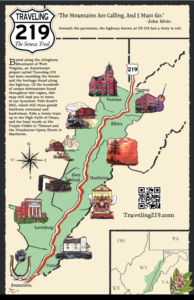 “Traveling 219 is a web-based multi-media project documenting stories from communities along US Route 219 in West Virginia and Maryland. Following the tradition of the Federal Writers’ Project from the 1930s, Traveling 219 collects stories and helps put more local voices from those communities on the radio, newspapers, and the web.”
“Traveling 219 is a web-based multi-media project documenting stories from communities along US Route 219 in West Virginia and Maryland. Following the tradition of the Federal Writers’ Project from the 1930s, Traveling 219 collects stories and helps put more local voices from those communities on the radio, newspapers, and the web.”
Collections: Art & Music, Family & Community, Food & Farming, History, Maryland, Roads & Rails, Stories & Legends
Explore “Traveling 219: The Seneca Trail” Website – as of April 2022, the website is not active
“West Virginia Watersheds”
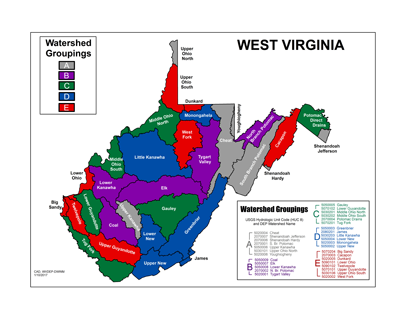
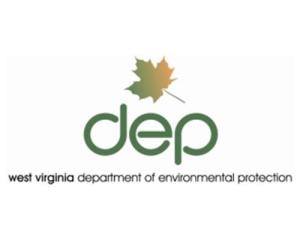 “West Virginia has 32 watersheds divided according to the USGS (US Geological Survey) hydrologic unit codes (HUC) that contribute to the Chesapeake Bay and the Gulf of Mexico. The waters west of the eastern continental divide flow into the Ohio River. The Ohio joins the Mississippi River at Cairo, IL. The Mississippi flows into the Gulf of Mexico at New Orleans, LA. The eastern continental divide changes the course of five of our eastern rivers towards the Potomac River. The Potomac enters the Chesapeake Bay southeast of Washington DC. A few streams in the southeastern corner of the state flow towards the James River.”
“West Virginia has 32 watersheds divided according to the USGS (US Geological Survey) hydrologic unit codes (HUC) that contribute to the Chesapeake Bay and the Gulf of Mexico. The waters west of the eastern continental divide flow into the Ohio River. The Ohio joins the Mississippi River at Cairo, IL. The Mississippi flows into the Gulf of Mexico at New Orleans, LA. The eastern continental divide changes the course of five of our eastern rivers towards the Potomac River. The Potomac enters the Chesapeake Bay southeast of Washington DC. A few streams in the southeastern corner of the state flow towards the James River.”
Explore “West Virginia Department of Environmenta Protection” Website
Explore WVDEP’s “Watersheds” Map jpg
“The Frank and Jane Gabor West Virginia Folklife Center” – Marion Co.
 “The Frank and Jane Gabor West Virginia Folklife Center on the campus of Fairmont State University is dedicated to the identification, preservation, and perpetuation of our region’s rich cultural heritage, through academic studies, educational programs, festivals and performances, and publications.”
“The Frank and Jane Gabor West Virginia Folklife Center on the campus of Fairmont State University is dedicated to the identification, preservation, and perpetuation of our region’s rich cultural heritage, through academic studies, educational programs, festivals and performances, and publications.”
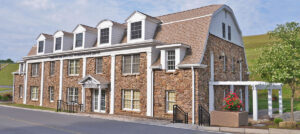 “Housed in an award-winning repurposed historic barn building on the Fairmont State University campus, the Frank & Jane Gabor West Virginia Folklife Center is home to the Ruth Ann Musick folklore archives, the Phyllis W. Moore West Virginia Authors archives, and the Patty Looman collection. These collections and additional archival materials can be made available for scholars and student researchers. . . “
“Housed in an award-winning repurposed historic barn building on the Fairmont State University campus, the Frank & Jane Gabor West Virginia Folklife Center is home to the Ruth Ann Musick folklore archives, the Phyllis W. Moore West Virginia Authors archives, and the Patty Looman collection. These collections and additional archival materials can be made available for scholars and student researchers. . . “
“WVU Jackson’s Mill” – Lewis Co.
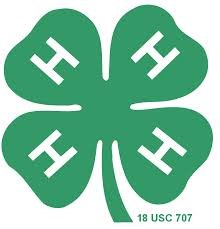

“Jackson’s Mill, home to West Virginia 4-H camping, is a rustic-style conference and event facility in a historic, heritage-based setting a few miles outside of Weston, WV. Jackson’s Mill is also home to the West Virginia Fire Academy, a one-of-a-kind training facility for volunteer and professional firefighters from around the state and nation.
“In 1921 the property was deeded to the State of West Virginia to be used as a youth camp and entrusted to the Extension Service of West Virginia University. WVU Jackson’s Mill was developed and became the nation’s first state 4-H camp.”
Explore “WVU Jackson’s Mill” Website
“Camp Caesar” – Webster Co.
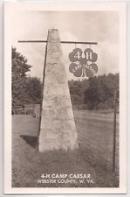
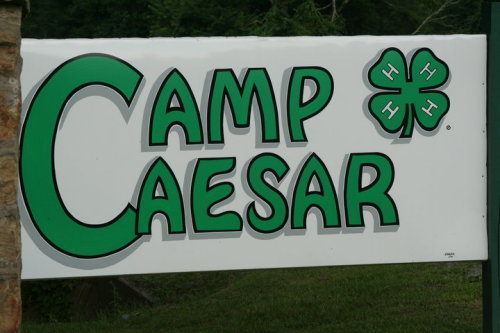 “Also known as the Webster County 4-H Camp, Camp Caesar is a historic campsite located just over 4 miles from Cowen and almost 10 miles from Webster Springs (Addison). The camp was established in 1922 by local members of the Farm Bureau and the Webster County extension agent, Julius A. Wolfram.”
“Also known as the Webster County 4-H Camp, Camp Caesar is a historic campsite located just over 4 miles from Cowen and almost 10 miles from Webster Springs (Addison). The camp was established in 1922 by local members of the Farm Bureau and the Webster County extension agent, Julius A. Wolfram.”
Explore West Virginia New Deal Trail’s “Camp Caesar” Website
“Cedar Lakes” – Jackson Co.




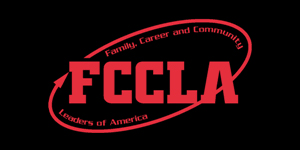 “A 228-acre tract of land two miles south of Ripley was selected by the State Board of Education as a camp site for the Future Farmers and Future Homemakers of America (now the Family, Career, and Community Leaders of America). The project was authorized by the 1949 Legislature. It is the mission of Cedar Lakes to provide leadership and educational opportunities with quality service in an outstanding environment.” Site of the annual “Mountain State Art and Craft Fair.”
“A 228-acre tract of land two miles south of Ripley was selected by the State Board of Education as a camp site for the Future Farmers and Future Homemakers of America (now the Family, Career, and Community Leaders of America). The project was authorized by the 1949 Legislature. It is the mission of Cedar Lakes to provide leadership and educational opportunities with quality service in an outstanding environment.” Site of the annual “Mountain State Art and Craft Fair.”
“The Green Bank Observatory” – Pocahontas Co.
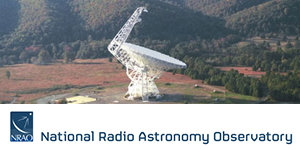 “The National Radio Astronomy Observatory in Green Bank, West Virginia, operates the world’s premiere astronomical telescope operating from centimeter to millimeter wavelengths. The Observatory has an active engineering research and development program ranging in areas from digital, mechanical, structural, computational, and software engineering.
“The National Radio Astronomy Observatory in Green Bank, West Virginia, operates the world’s premiere astronomical telescope operating from centimeter to millimeter wavelengths. The Observatory has an active engineering research and development program ranging in areas from digital, mechanical, structural, computational, and software engineering.  The laboratories, utilities and support facilities make it an attractive location for a variety of research experiments, and it serves as the field station for several university-based research teams. The Observatory is also a major resource for STEM education and public outreach and is used for an extensive array of programs in education and public outreach, and for the training of science and engineering students and teachers. These activities center on the Green Bank Science Center, with its auditorium, classrooms, research facilities and large exhibit hall, which is visited by 50,000 people every year.”
The laboratories, utilities and support facilities make it an attractive location for a variety of research experiments, and it serves as the field station for several university-based research teams. The Observatory is also a major resource for STEM education and public outreach and is used for an extensive array of programs in education and public outreach, and for the training of science and engineering students and teachers. These activities center on the Green Bank Science Center, with its auditorium, classrooms, research facilities and large exhibit hall, which is visited by 50,000 people every year.”
Explore National Radio Astronomy Observatory’s “Green Bank Site” Website
Explore NRAO Green Bank Site’s “Education and Public Outreach” Website
“Lab 304: Great Big Telescope”
 “Mike Youngren produced this story on the Robert C. Byrd Telescope at the National Radio Astronomy Observatory in Greenbank, West Virginia. Bob Wilkinson and Chuck Frostick were the videographers for this piece. Wilkinson was also the video editor.” (6:22/2008/WV Public Broadcasting)
“Mike Youngren produced this story on the Robert C. Byrd Telescope at the National Radio Astronomy Observatory in Greenbank, West Virginia. Bob Wilkinson and Chuck Frostick were the videographers for this piece. Wilkinson was also the video editor.” (6:22/2008/WV Public Broadcasting)
“The Town Where Wi-Fi Is Banned: The Green Bank Telescope and the Quiet Zone”
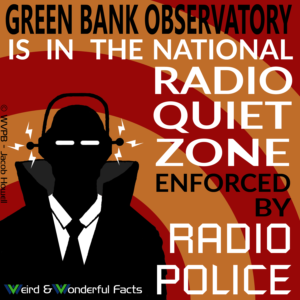 “Tucked away in a valley in the Allegheny Mountains in West Virginia, is this: the Green Bank Radio Telescope, the largest steerable radio telescope in the world. And there are some rather special rules for the area around it… Thanks to Justin Richmond-Decker and Mike Holstine at the National Radio Astronomy Observatory in Green Bank for inviting me over and letting us film at the Telescope on one of their maintenance days!” (5:49/2016/TomScott)
“Tucked away in a valley in the Allegheny Mountains in West Virginia, is this: the Green Bank Radio Telescope, the largest steerable radio telescope in the world. And there are some rather special rules for the area around it… Thanks to Justin Richmond-Decker and Mike Holstine at the National Radio Astronomy Observatory in Green Bank for inviting me over and letting us film at the Telescope on one of their maintenance days!” (5:49/2016/TomScott)
“The Largest Fully Steerable Telescope in the World” – National Geographic
 “The Green Bank Telescope, located in Green Bank, West Virginia, is home to the largest fully steerable telescope in the world. Taller than the Statue of Liberty, and with a diameter equivalent to the length of three U.S. football fields, this engineering marvel is precise enough to capture the faintest radio waves in the cosmos. Using the data from the GBT, researchers and scientists are able to study the faintest radio objects in the universe.” (3:24/2014/NationalGeographic)
“The Green Bank Telescope, located in Green Bank, West Virginia, is home to the largest fully steerable telescope in the world. Taller than the Statue of Liberty, and with a diameter equivalent to the length of three U.S. football fields, this engineering marvel is precise enough to capture the faintest radio waves in the cosmos. Using the data from the GBT, researchers and scientists are able to study the faintest radio objects in the universe.” (3:24/2014/NationalGeographic)
“Criminal Justice Information Services Division” – US Federal Bureau of Investigation – Harrison Co.

 “Nestled in the hills of West Virginia is a high-tech hub that supports crime-fighting and national security.
“Nestled in the hills of West Virginia is a high-tech hub that supports crime-fighting and national security.
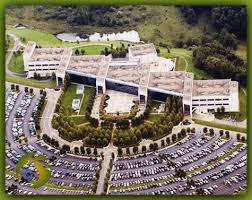 “Here, statisticians are compiling vast amounts of data from law enforcement into a series of regular reports detailing the state of crime in communities across the country. The world’s largest repository of criminal fingerprints and history records is being searched in a flash by investigators and police professionals working to catch crooks and terrorists. State-of-the-art technologies, built to ensure the timely and legal purchase of weapons, are instantly returning results to gun shops nationwide.
“Here, statisticians are compiling vast amounts of data from law enforcement into a series of regular reports detailing the state of crime in communities across the country. The world’s largest repository of criminal fingerprints and history records is being searched in a flash by investigators and police professionals working to catch crooks and terrorists. State-of-the-art technologies, built to ensure the timely and legal purchase of weapons, are instantly returning results to gun shops nationwide.
“That’s just the beginning of what goes on at CJIS—the Criminal Justice Information Services Division—home to an array of services that are a lifeline to law enforcement and a cornerstone of protecting the nation.”
Explore FBI’s “Criminal Justice Information Services Division” Website for overview
 “Like the loops and whorls of the fingerprints on file there, the FBI’s crime data center outside Clarksburg, West Virginia, is one of a kind.”
“Like the loops and whorls of the fingerprints on file there, the FBI’s crime data center outside Clarksburg, West Virginia, is one of a kind.”
Explore Information from National Geographic’s “FBI Crime Center WV” Website (pdf)
“US Bureau of the Fiscal Service” – Wood Co.
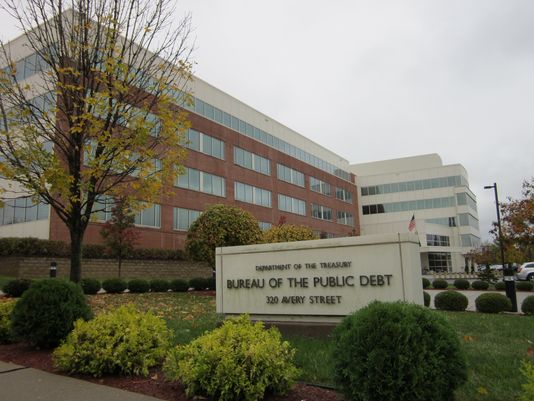
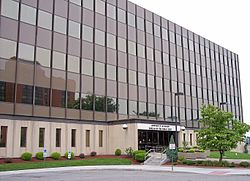 “You haven’t heard of the Bureau of the Public Debt before? We are a small agency within the Department of the Treasury. Our customers are your neighbors, co-workers, and most likely you, too. You were our customer if you’ve ever bought any type of Treasury security for yourself or, as millions have done in the case of savings bonds, as a gift for someone else.
“You haven’t heard of the Bureau of the Public Debt before? We are a small agency within the Department of the Treasury. Our customers are your neighbors, co-workers, and most likely you, too. You were our customer if you’ve ever bought any type of Treasury security for yourself or, as millions have done in the case of savings bonds, as a gift for someone else.
“We are located both in Washington, DC, and in Parkersburg, WV. The majority of our staff works in our offices in Parkersburg.”

In 2012, the US Treasury Department consolidated the operations of the Bureau of the Public Debt and the Financial Management Service into the Bureau of the Fiscal Service.
Explore “US Bureau of the Fiscal Service” Website
Explore “US Bureau of the Public Debt” Website
Explore “US Bureau of the Public Debt” article from USA Today (pdf)
“Oglebay Resort” – Ohio Co.
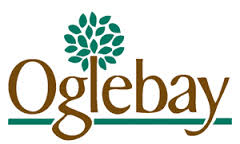 “
“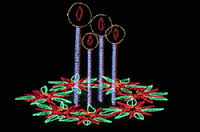 Over a hundred years ago, a tradition of generous hospitality was started at the summer estate of Earl W. Oglebay in Wheeling, West Virginia. Today, Oglebay Resort and Conference Center offers 1,700 acres of year-round recreational opportunities and excellent overnight accommodations while retaining its picturesque natural beauty.”
Over a hundred years ago, a tradition of generous hospitality was started at the summer estate of Earl W. Oglebay in Wheeling, West Virginia. Today, Oglebay Resort and Conference Center offers 1,700 acres of year-round recreational opportunities and excellent overnight accommodations while retaining its picturesque natural beauty.”
Explore “Oglebay Resort” Website
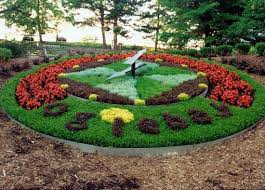 <<Information on “The Museums of Oglebay” is on the MH3WV “Museums” page>>
<<Information on “The Museums of Oglebay” is on the MH3WV “Museums” page>>
“Oglebay Park – Celebrating 90 Years of Fun” (3:08/2018/Oglebay)
“Oglebay Festival of Lights” (2:50/2013/TheDominionPost)
“The Greenbrier” – Greenbrier Co.

“Located amid the breathtaking mountains of West Virginia, The Greenbrier is a National Historic Landmark and world-class resort that has been welcoming guests from around the world since 1778. The natural mineral springs that drew our first guests over 235 years ago continue to lure visitors to our 11,000 acre luxury retreat today. With a guest list that includes 27 of our country’s 45 Presidents, America’s Resort has long been a favorite destination of royalty, celebrities and business leaders. Today, The Greenbrier invites a new generation to come out and play. Enjoy relaxing pastimes, start treasured traditions, or set out on an amazing adventure together. You’ll find endless vacation possibilities at The Greenbrier.”
THE GREENBRIER RE-IMAGINED
 “Combining graciousness of the past with exceptional comforts of today, a new era of elegance awaits you at The Greenbrier. This renowned property offers 710 rooms, including 33 suites and 96 guest and estate homes. The Greenbrier has 10 lobbies, 40+ meeting rooms and a complete conference center facility. The Greenbrier is widely regarded as one of the finest luxury resorts around the world. Surrounded by the wondrous Allegheny Mountains, The Greenbrier offers exclusive services and amenities such as championship golf, fine dining, more than 55 activities, designer boutiques, our world-renowned mineral spa and a 103,000 square foot gaming and entertainment venue.”
“Combining graciousness of the past with exceptional comforts of today, a new era of elegance awaits you at The Greenbrier. This renowned property offers 710 rooms, including 33 suites and 96 guest and estate homes. The Greenbrier has 10 lobbies, 40+ meeting rooms and a complete conference center facility. The Greenbrier is widely regarded as one of the finest luxury resorts around the world. Surrounded by the wondrous Allegheny Mountains, The Greenbrier offers exclusive services and amenities such as championship golf, fine dining, more than 55 activities, designer boutiques, our world-renowned mineral spa and a 103,000 square foot gaming and entertainment venue.”
Explore “The Greenbrier” Commercial Website
“There is Only One – The Greenbrier”
“The Greenbrier is a distinct and spectacular, luxury mountain resort situated in the mountains of West Virginia. It features 710 guest rooms, suites, cottages and estate homes, 19 restaurants and lounges and four breathtaking golf courses. Guests experience authentic southern hospitality making memories that will last a lifetime at one of the most remarkable resorts in the world. Since 1778, The Greenbrier truly is one of one.” (2:48/2015/ The Greenbrier)
“The Greenbrier Exhibit at the West Virginia Division of History & Culture” (1:38/2011/TheGreenbrier)
“The Bunker at The Greenbrier”
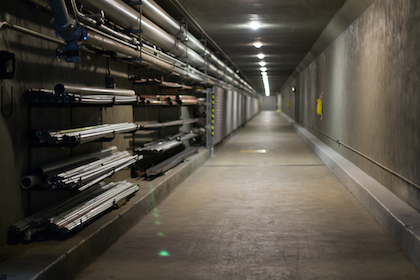
 “The secret is out! The declassified Bunker at The Greenbrier is a must-see experience that takes you behind the scenes and walks you through a fascinating period in the resort’s history. Carved deep into the mountainside beneath our West Virginia Wing is an emergency Cold War fallout shelter. Once a top secret U.S. government relocation facility for Congress, The Bunker is now open to anyone interested in reliving a legendary piece of The Greenbrier history. Bunker Tours provide a unique and in-depth look behind the hidden doors and let you explore an aspect of The Greenbrier that no other resort can claim.”
“The secret is out! The declassified Bunker at The Greenbrier is a must-see experience that takes you behind the scenes and walks you through a fascinating period in the resort’s history. Carved deep into the mountainside beneath our West Virginia Wing is an emergency Cold War fallout shelter. Once a top secret U.S. government relocation facility for Congress, The Bunker is now open to anyone interested in reliving a legendary piece of The Greenbrier history. Bunker Tours provide a unique and in-depth look behind the hidden doors and let you explore an aspect of The Greenbrier that no other resort can claim.”
Explore “The Bunker at the Greenbrier” Website
“The Bunker At The Greenbrier” (4:28/2014/asmithproduction)
“Blue Sulphur Springs”
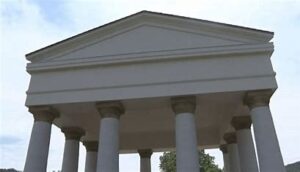
“What happened to Blue Sulphur Springs, West Virginia’s forgotten mineral springs resort?”
![]() “West Virginia has a number of natural hot springs that have drawn some very famous guests over the years. Some of them have evolved into modern tourist attractions, like the mineral bath at what is now The Greenbrier or the natural hot springs at Berkeley Springs State Park, but others have turned into ruins. . .”
“West Virginia has a number of natural hot springs that have drawn some very famous guests over the years. Some of them have evolved into modern tourist attractions, like the mineral bath at what is now The Greenbrier or the natural hot springs at Berkeley Springs State Park, but others have turned into ruins. . .”
“A Spa gets TLC”
![]() “In the Green Rolling Hills of Greenbrier County . . . “
“In the Green Rolling Hills of Greenbrier County . . . “
Explore Charleston Gazette-Mail’s “A Spa gets TLC” story (pdf)
“West Virginia Hauntings”

“A Guide to the Haunted Tours of West Virginia”
Explore West Virginia Tourism’s “West Virginia Hauntings” Brochure pdf (2008)
IF. YOU. DARE!


“Former West Virginia Penitentiary” – Marshall Co.

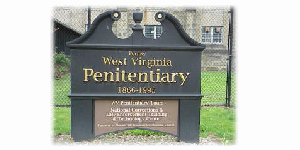 “The former West Virginia Penitentiary is a gothic-style fortress situated in the heart of historic Moundsville, West Virginia. The structure, which has been placed on the National Historic Register, encompasses over ten acres of ground and was the second public building constructed by the newly formed state of West Virginia after the Civil War. It operated from 1876 to 1995.”
“The former West Virginia Penitentiary is a gothic-style fortress situated in the heart of historic Moundsville, West Virginia. The structure, which has been placed on the National Historic Register, encompasses over ten acres of ground and was the second public building constructed by the newly formed state of West Virginia after the Civil War. It operated from 1876 to 1995.”
Explore “West Virginia Penitentiary Tours” Website
“The Trans-Allegheny Asylum” – Lewis Co.
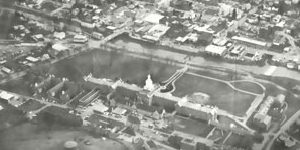
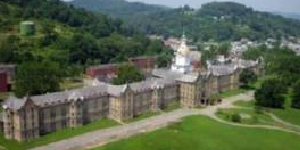 “The Trans-Allegheny Asylum, constructed between 1858 and 1881, is the largest hand-cut stone masonry building in North America, and is purportedly the second largest in the world, next to the Kremlin. It previously housed Weston State Hospital.”
“The Trans-Allegheny Asylum, constructed between 1858 and 1881, is the largest hand-cut stone masonry building in North America, and is purportedly the second largest in the world, next to the Kremlin. It previously housed Weston State Hospital.”
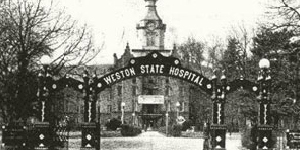 “Welcome to the Trans-Allegheny Lunatic Asylum (AKA the Weston State Hospital) located in Historic Weston, West Virginia. This National Historic Landmark served as a sanctuary for the mentally ill beginning in the mid-1800’s. This 160 year old asylum holds fascinating stories of Civil War raids, a gold robbery, the “curative” effects of architecture, and the efforts of determined individuals to help better the lives of the mentally ill. Tour this nationally recognized historic landmark and see how it left a lasting impression on local and national history.”
“Welcome to the Trans-Allegheny Lunatic Asylum (AKA the Weston State Hospital) located in Historic Weston, West Virginia. This National Historic Landmark served as a sanctuary for the mentally ill beginning in the mid-1800’s. This 160 year old asylum holds fascinating stories of Civil War raids, a gold robbery, the “curative” effects of architecture, and the efforts of determined individuals to help better the lives of the mentally ill. Tour this nationally recognized historic landmark and see how it left a lasting impression on local and national history.”
Explore “Trans-Allegheny Asylum” Website
“Lake Shawnee Haunted Amusement Park” – Mercer Co.
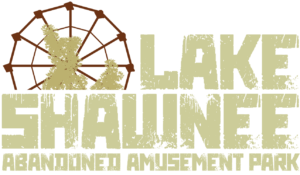 From WVTourism.com: “In the late 1700s, the Clay family moved into western Virginia (present day Mercer County, West Virginia). Mitchell Clay and his wife settled on an 800 acre farm and raised 14 children, but in 1783 tragedy struck. While Mitchell was out hunting, several members of the Shawnee tribe killed two of the Clay children and burned another at the stake. Mitchell hunted down several of the Native Americans and retaliated. No one showed interest in the land until the early 1900s when Conley T. Snidow purchased the land and built a small amusement park on it. During its operation, at least six people died at the amusement park. Tragedy continued on the land, and the park ultimately closed. Many of the rides and structures of the amusement park still stand today, rusted and overgrown with weeds. Many claim that the property is haunted by the spirits of the young children that died there. Native American bones have also been excavated from the site, revealing an ancient Native American burial ground. Perhaps the property is cursed, or perhaps it has just been a series of unfortunate events. The property has been featured on Travel Channel’s Most Terrifying Places in America but many think it is one of the most haunted places in the world. You can find out for yourself but scheduling a tour of the property, or you can visit during the Dark Carnival on weekends in October!”
From WVTourism.com: “In the late 1700s, the Clay family moved into western Virginia (present day Mercer County, West Virginia). Mitchell Clay and his wife settled on an 800 acre farm and raised 14 children, but in 1783 tragedy struck. While Mitchell was out hunting, several members of the Shawnee tribe killed two of the Clay children and burned another at the stake. Mitchell hunted down several of the Native Americans and retaliated. No one showed interest in the land until the early 1900s when Conley T. Snidow purchased the land and built a small amusement park on it. During its operation, at least six people died at the amusement park. Tragedy continued on the land, and the park ultimately closed. Many of the rides and structures of the amusement park still stand today, rusted and overgrown with weeds. Many claim that the property is haunted by the spirits of the young children that died there. Native American bones have also been excavated from the site, revealing an ancient Native American burial ground. Perhaps the property is cursed, or perhaps it has just been a series of unfortunate events. The property has been featured on Travel Channel’s Most Terrifying Places in America but many think it is one of the most haunted places in the world. You can find out for yourself but scheduling a tour of the property, or you can visit during the Dark Carnival on weekends in October!”
“Prominent Figures in Lake Shawnee’s History”
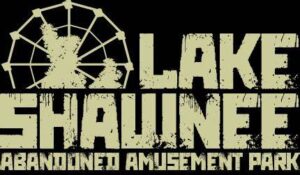 “Native Americans lived on the Lake Shawnee property for more than 2,000 years. With rich soil, a crystal clear river, and a cliff nearby (known as “Indian Lookout”) made this land perfect to raise a family and survive. On your visit, you will see the burial grounds, ancient artifacts, photos of the Marshall University and Concord University archaeological digs, and you will hear stories about their lives and deaths. . .”
“Native Americans lived on the Lake Shawnee property for more than 2,000 years. With rich soil, a crystal clear river, and a cliff nearby (known as “Indian Lookout”) made this land perfect to raise a family and survive. On your visit, you will see the burial grounds, ancient artifacts, photos of the Marshall University and Concord University archaeological digs, and you will hear stories about their lives and deaths. . .”
Explore Lake Shawnee’s “History” Website to continue reading
“West Virginia’s Haunted Amusement Park”
 “The ghost tales and sightings come fast and furious from the lips of the owner of West Virginia’s “Haunted Amusement Park” near Princeton. Gaylord White is the master of ectoplasmic ceremonies at the supposedly ghost-ridden park, filled with the vine-ridden corpses of a Ferris wheel and a swing ride on which a little girl once died – and still haunts, White says. Not to mention the potential ghostly visitations by a host of American Indian ghosts who used to have villages here. Take a visit to the park in this Charleston Gazette video . . . shot and produced by Kathryn Gregory and Douglas Imbrogno.” (2:52/2010 / Charleston Gazette)
“The ghost tales and sightings come fast and furious from the lips of the owner of West Virginia’s “Haunted Amusement Park” near Princeton. Gaylord White is the master of ectoplasmic ceremonies at the supposedly ghost-ridden park, filled with the vine-ridden corpses of a Ferris wheel and a swing ride on which a little girl once died – and still haunts, White says. Not to mention the potential ghostly visitations by a host of American Indian ghosts who used to have villages here. Take a visit to the park in this Charleston Gazette video . . . shot and produced by Kathryn Gregory and Douglas Imbrogno.” (2:52/2010 / Charleston Gazette)
“Mothman Museum” – Mason Co.
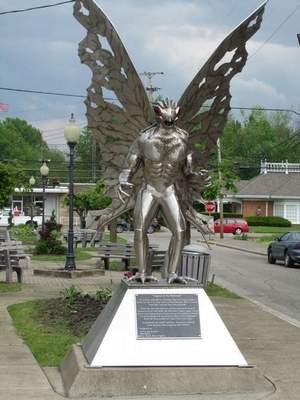

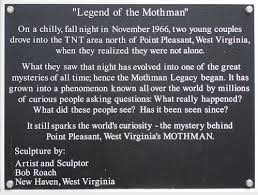
“IN NOVEMBER 1966, EERIE THINGS BEGAN TO OCCUR IN THE SMALL TOWN OF POINT PLEASANT. STRANGE LIGHTS IN THE SKY…MYSTERIOUS “MEN IN BLACK”…AND A FLYING RED-EYED CREATURE CALLED MOTHMAN CHANGED THIS SMALL WEST VIRGINIA TOWN….FOREVER.”
“Welcome to our new virtual Mothman Museum and merchandise site. Now you can scope out “The World’s Only Mothman Museum”, and shop from the largest collection of mothman souvenirs and memorabilia offered anywhere in the world. We offer a variety of styles and merchandise for men, women, and kids and we have everything from books, to novelties, clothing and more.”
Explore “Mothman Museum” Commercial Website
”Mothman Festival is an annual event held every third weekend in September that commemorates the 1966 Point Pleasant, West Virginia Mothman sighting, which gave birth to the infamous red-eyed winged legend. People from all over the world gather around our charming Main Street to celebrate their favorite cryptid during this one of a kind event.”
Explore “Mothman Festival” Website
“Flatwoods Monster” – Braxton Co.

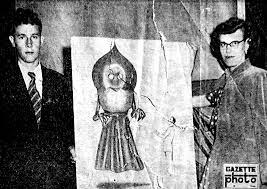 “In modern police parlance a long unsolved homicide or other crime may be known as a “cold case,” a term we might borrow for such paranormal mysteries as that of the Braxton Monster, which was launched on September 12, 1952, and never completely explained. At about 7:15 p.m. on that day, at Flatwoods, a little village in the hills of West Virginia, some youngsters were playing football on the school playground. Suddenly they saw a fiery UFO streak across the sky and, apparently, land on a hilltop of the nearby Bailey Fisher farm. The youths ran to the home of Mrs. Kathleen May, who provided a flashlight and accompanied them up the hill. In addition to Mrs. May, a local beautician, the group included her two sons, Eddie 13, and Freddie 14, Neil Nunley 14, Gene Lemon 17, and Tommy Hyer and Ronnie Shaver, both 10, along with . . .”
“In modern police parlance a long unsolved homicide or other crime may be known as a “cold case,” a term we might borrow for such paranormal mysteries as that of the Braxton Monster, which was launched on September 12, 1952, and never completely explained. At about 7:15 p.m. on that day, at Flatwoods, a little village in the hills of West Virginia, some youngsters were playing football on the school playground. Suddenly they saw a fiery UFO streak across the sky and, apparently, land on a hilltop of the nearby Bailey Fisher farm. The youths ran to the home of Mrs. Kathleen May, who provided a flashlight and accompanied them up the hill. In addition to Mrs. May, a local beautician, the group included her two sons, Eddie 13, and Freddie 14, Neil Nunley 14, Gene Lemon 17, and Tommy Hyer and Ronnie Shaver, both 10, along with . . .”
Explore “Braxton County CVB” Website to continue reading
“Mystery Hole” – Fayette Co.
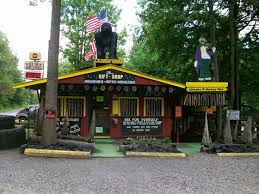
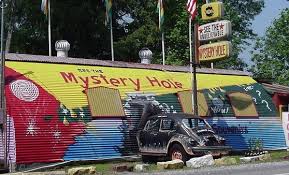 “This mysterious mind-baffling Mystery Hole was ‘unclosed’ for public view around the middle of the year 1973, and is probably the best kept secret in WEST VIRGINIA or maybe in the whole U.S.A., …no one really knows for sure. Here the laws of gravity seem to have gone berserk and your sense of balance is entirely upset.”
“This mysterious mind-baffling Mystery Hole was ‘unclosed’ for public view around the middle of the year 1973, and is probably the best kept secret in WEST VIRGINIA or maybe in the whole U.S.A., …no one really knows for sure. Here the laws of gravity seem to have gone berserk and your sense of balance is entirely upset.”
Explore “The Mystery Hole” Website
“New Vrindaban – The Hare Krishna Palace of Gold” – Marshall Co.

 “The New Vrindaban Holy Dham is set in the beautiful and peaceful Appalachian Mountains in the rural West Virginia Panhandle. This spiritual community has been a place of pilgrimage for many thousands of visitors each year. Sri Sri Radha Vrindaban Chandra Mandir, the main temple hall, is the main attraction of many wonderful attractions in the New Vrindaban Community and is usually the first stop for all visitors and pilgrims.”
“The New Vrindaban Holy Dham is set in the beautiful and peaceful Appalachian Mountains in the rural West Virginia Panhandle. This spiritual community has been a place of pilgrimage for many thousands of visitors each year. Sri Sri Radha Vrindaban Chandra Mandir, the main temple hall, is the main attraction of many wonderful attractions in the New Vrindaban Community and is usually the first stop for all visitors and pilgrims.”
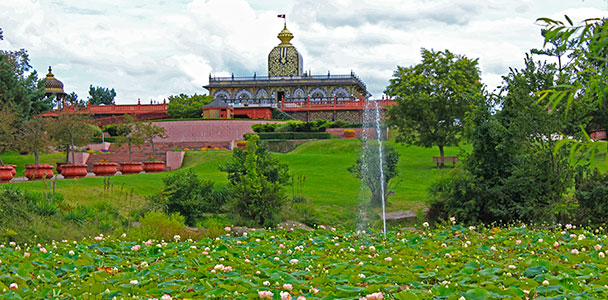
“Discover the Palace, Palace Rose Garden, Lotus Pond & Natural Beauty, Palace Gift Shop, New Vrindaban Temple, New Vrindaban Goshalla, New Vrindaban Gardens”
Explore Main “New Vrindaban” Website
Explore “New Vrindaban” Website for numerous photos
“Set in the Appalachian Mountains of West Virginia, New Vrindaban is home to the largest Hare Krishna community in America. It’s also known as ‘America’s Taj Mahal.’ ” (2:00/2014/Smithsonian Channel)
“Palace of Gold” (5:37/2009/astraydogfilm)
“Summit Bechtel Reserve” – Boy Scouts of America – Fayette Co.
National High Adventure Base – National Training Center – National Scout Camp
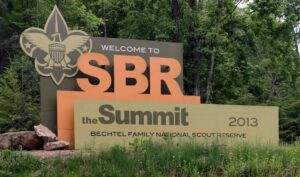
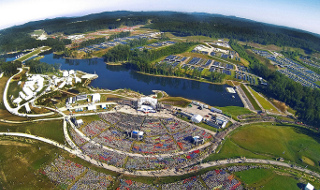 “Situated in the wilds of West Virginia, The Summit is a training, Scouting, and adventure center for the millions of youth and adults involved in the Boy Scouts of America and anyone who loves the outdoors. The Summit Bechtel Reserve is also home to the National Scout Jamboree and the Paul R. Christen National High Adventure Base which complements the three existing bases: Philmont Scout Ranch, Northern Tier and Florida Sea Base.
“Situated in the wilds of West Virginia, The Summit is a training, Scouting, and adventure center for the millions of youth and adults involved in the Boy Scouts of America and anyone who loves the outdoors. The Summit Bechtel Reserve is also home to the National Scout Jamboree and the Paul R. Christen National High Adventure Base which complements the three existing bases: Philmont Scout Ranch, Northern Tier and Florida Sea Base.
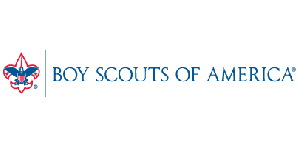 “Get ready for the next century of Scouting. With incredible facilities and amazing outdoor programs, The Summit is a place that takes Scouts and Venturers to the limits of what they think they can do, and then pushes them further.
“Get ready for the next century of Scouting. With incredible facilities and amazing outdoor programs, The Summit is a place that takes Scouts and Venturers to the limits of what they think they can do, and then pushes them further.
Explore Boy Scouts of America’s “Summit Bechtel Reserve” Website
“Tamarack – The Best of West Virginia” – Raleigh Co.

 “Tamarack’s striking, peaked red roof and attractively landscaped grounds draw half a million visitors annually into a welcome respite of visual beauty, Appalachian sounds, and distinctive aromas.
“Tamarack’s striking, peaked red roof and attractively landscaped grounds draw half a million visitors annually into a welcome respite of visual beauty, Appalachian sounds, and distinctive aromas.
“Tamarack, with its unique retail artisan products and extraordinary food fare, started out as a simple vision to promote the Mountain State’s wonderful image. Wildly popular after nearly 20 years, Tamarack greets hundreds of thousands of guests annually with a memorable experience.”
“Camden Park” – Cabell Co.
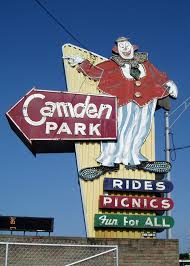
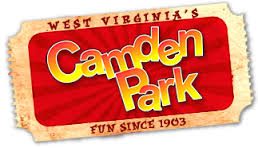 “Camden Park is owned by the Boylin Family. This is the second generation of Boylins owning and operating West Virginia’s only amusement park. J. P. Boylin transformed Camden Park from a carousel at the end of a trolley line in Huntington, WV to an amusement park for families of all ages in 1950. By the late 19th century almost every large town in America had streetcars and many had parks to boost weekend and holiday traffic. Originally developed as a picnic area by the Camden Interstate Railway in 1903, Camden Park has survived into the 21st century as a thriving traditional amusement park. Over the years Camden Park has been the setting for baseball games, tens of thousands of picnics, fairs, marathon dances, roller derbies, flagpole sitting, a swimming pool, a zoo, plus numerous attractions and rides.” From The State Journal
“Camden Park is owned by the Boylin Family. This is the second generation of Boylins owning and operating West Virginia’s only amusement park. J. P. Boylin transformed Camden Park from a carousel at the end of a trolley line in Huntington, WV to an amusement park for families of all ages in 1950. By the late 19th century almost every large town in America had streetcars and many had parks to boost weekend and holiday traffic. Originally developed as a picnic area by the Camden Interstate Railway in 1903, Camden Park has survived into the 21st century as a thriving traditional amusement park. Over the years Camden Park has been the setting for baseball games, tens of thousands of picnics, fairs, marathon dances, roller derbies, flagpole sitting, a swimming pool, a zoo, plus numerous attractions and rides.” From The State Journal
Explore “Camden Park” Commercial Website
“The Mountain State Streetcar Era”
May 29, 2020
![]() “Before they reached the end of the line, trolleys helped towns grow and connect” “The clatter and clang of the streetcar — often called a trolley — once was a familiar part of daily life in a number of West Virginia communities . . .”
“Before they reached the end of the line, trolleys helped towns grow and connect” “The clatter and clang of the streetcar — often called a trolley — once was a familiar part of daily life in a number of West Virginia communities . . .”
Explore Daily-Mail WV’s “The Mountain State Streetcar Era” article to continue reading (2 pages) – includes Huntington, Wheeling, Clarksburg-Fairmont, Parkersburg-Marietta, Charleston, Princeton-Bluefield, Sistersville, and Wellsburg-Bethany. Also: “Trolley Parks Drew Crowds of Fun-seekers” PAGE 1 (pdf) PAGE 2 (pdf)
“A Retro Summer at Camden Park”
May 21, 2021
![]() “Only amusement park in W.Va. rolls out new season of vintage attractions.” “Young children marvel at their first visit. Their older brothers and sisters are thrilled to be back again. (“Am I big enough to ride the Big Dipper this year?”) And walking the Midway can take their parents and grandparents down memory lane as they recall hot summer days filled with fun rides and cotton candy . . .”
“Only amusement park in W.Va. rolls out new season of vintage attractions.” “Young children marvel at their first visit. Their older brothers and sisters are thrilled to be back again. (“Am I big enough to ride the Big Dipper this year?”) And walking the Midway can take their parents and grandparents down memory lane as they recall hot summer days filled with fun rides and cotton candy . . .”
Explore Daily-Mail WV’s “A Retro Summer at Camden Park” article to continue reading (2 pages) – also: “Trolley parks: A bygone era of entertainment” – includes: Rock Springs Park, Luna Park, Terrapin Park, Paden Park, and Oak Park. PAGE 1 (pdf) PAGE 2 (pdf)
“Hovatter’s Wildlife Zoo” – Preston Co.
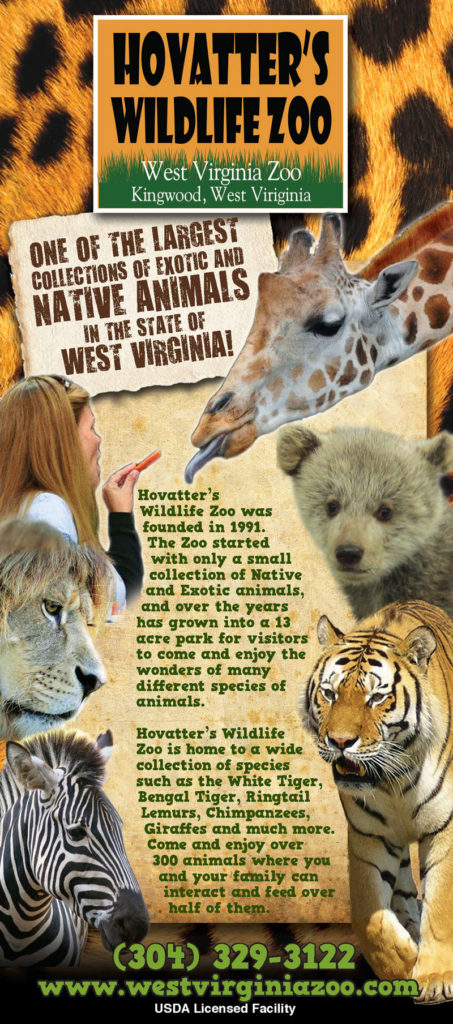


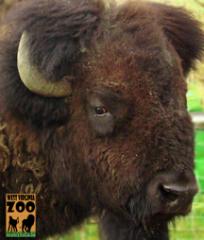
“This West Virginia Zoo is home to over 30 different species of native and exotic animals from all over the world. What started out as a small collection of deer, black bear, cougars and tigers has turned into a menagerie. You always find new babies for that special photo opportunity.”
Animal List: (subject to change) Giraffe, Chimpanzee, Grizzly Bear, African Lion, White Bengal Tiger, Orange Bengal Tiger, Russian Wild Boar, Spider Monkey, Ringtail Lemurs, Himalayan Bear, Japanese Macaque, Aoudad, Spotted Leopard, Black Leopard, African Pygmy Goat, Miniature Donkey, Rattlesnake, Olive Baboon, Raccoon, Buffalo, Pot Belly Pig, Bobcat, Camel, Turtles, Grivet Monkey, Capuchin Monkey, various Reptiles.
Explore “Hovatter’s Wildlife Zoo” Commercial Website
“West Virginia State Wildlife Center” – Upshur Co.
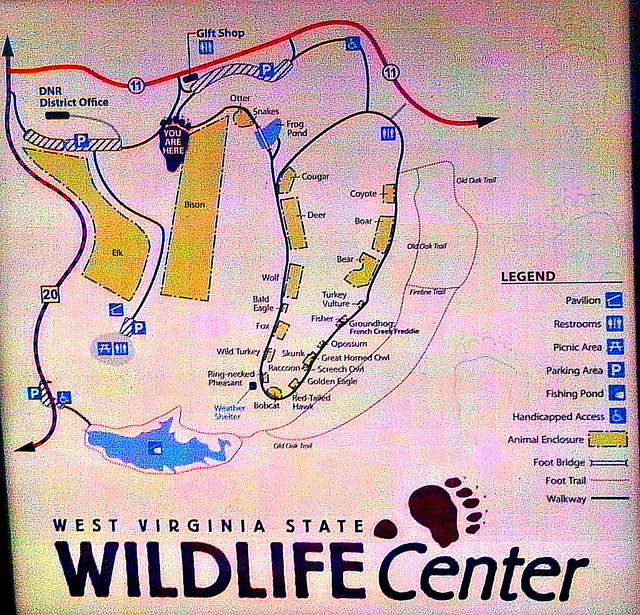
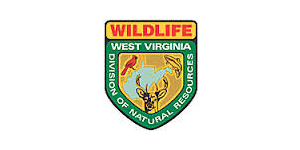
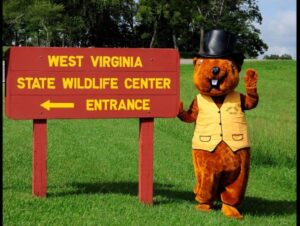
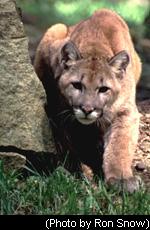
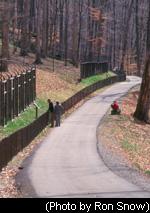
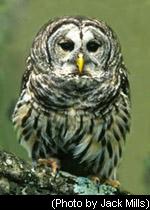
“The West Virginia State Wildlife Center is a modern zoological facility displaying native and introduced state wildlife.” Also the home of “French Creek Freddie.”
Explore “West Virginia State Wildlife Center” Brochure pdf (2008) – includes Facilities, Map, Exhibits, History, Admission
“Beth Henry-Vance with the Youth Environmental Program takes a trip to the West Virginia Wildlife Center in Upshur County, which is home to native and introduced species such as elk, bison, mountain lions, bobcats, bears, deer and a famous groundhog named French Creek Freddie. The center is open year-round, and features a trail, picnic areas, gift shop and fishing area. This “virtual” tour is part of the DEP’s 2020 Youth Environmental Program Virtual Conference.” (1:54/2020/Environment Matters)
“West Virginia University Core Arboretum” – Monongalia Co.
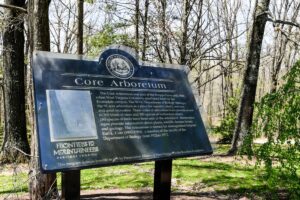
 “WVU Core Arboretum is an outdoor facility dedicated to supporting the research, teaching, and service efforts of WVU by providing resources and opportunities for the study and enjoyment of plants, animals, and natural processes. The Arboretum also provides important recreational opportunities and pedestrian connections for WVU and Morgantown. Our resources and opportunities are shared freely with the public as well as the WVU community. . . “
“WVU Core Arboretum is an outdoor facility dedicated to supporting the research, teaching, and service efforts of WVU by providing resources and opportunities for the study and enjoyment of plants, animals, and natural processes. The Arboretum also provides important recreational opportunities and pedestrian connections for WVU and Morgantown. Our resources and opportunities are shared freely with the public as well as the WVU community. . . “
“West Virginia Botanic Garden at Tibbs Run Preserve” – Monongalia Co.
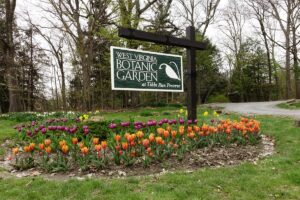
 “Imagine beautifully landscaped gardens reflecting on a shimmering pond. Trails weave from bright flowering meadows into a cool, shaded woodland. Streams sparkle beneath stately hemlocks. Some visitors stand silently, resting in the splendor of the vista; others energetically explore this wonderful community resource, the West Virginia Botanic Garden at Tibbs Run Preserve. The West Virginia Botanic Garden at Tibbs Run Preserve seeks to foster learning, inspiration, and well-being through the beauty and wonder of plants, the natural environment, and culturally enriching experiences.”
“Imagine beautifully landscaped gardens reflecting on a shimmering pond. Trails weave from bright flowering meadows into a cool, shaded woodland. Streams sparkle beneath stately hemlocks. Some visitors stand silently, resting in the splendor of the vista; others energetically explore this wonderful community resource, the West Virginia Botanic Garden at Tibbs Run Preserve. The West Virginia Botanic Garden at Tibbs Run Preserve seeks to foster learning, inspiration, and well-being through the beauty and wonder of plants, the natural environment, and culturally enriching experiences.”
Explore “West Virginia Botanic Garden” Website
“Donel C. Kinnard Memorial State Veterans Cemetery” – Kanawha Co.
“The Donel C. Kinnard Memorial State Veterans Cemetery is located on a 348-acre plot of land in Institute, West Virginia. The cemetery can eventually provide a dignified resting place for 66,000 of our state’s honored veterans and their closest family. . .”
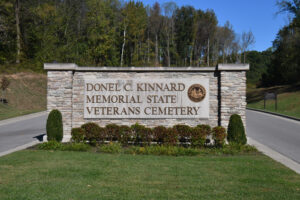
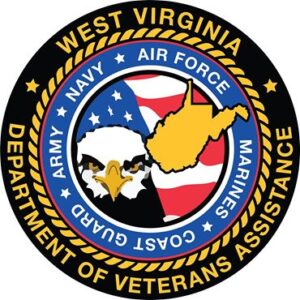 “In 1987, construction of an 89-acre West Virginia National Cemetery in Grafton – the second national cemetery in the North-Central West Virginia city – gave the Mountain State two national veterans cemeteries. Neither, however, were conveniently located for use by residents of the state’s central or southern counties. Members of veterans service organizations and concerned citizens organized a successful effort in 2006 to establish a State-run veterans cemetery to better serve West Virginia’s veterans and their families. A U.S. Department of Veterans Affairs grant helped facilitate construction of the cemetery. Work began in October 2010. The opening and dedication ceremony was held on Memorial Day 2012.”
“In 1987, construction of an 89-acre West Virginia National Cemetery in Grafton – the second national cemetery in the North-Central West Virginia city – gave the Mountain State two national veterans cemeteries. Neither, however, were conveniently located for use by residents of the state’s central or southern counties. Members of veterans service organizations and concerned citizens organized a successful effort in 2006 to establish a State-run veterans cemetery to better serve West Virginia’s veterans and their families. A U.S. Department of Veterans Affairs grant helped facilitate construction of the cemetery. Work began in October 2010. The opening and dedication ceremony was held on Memorial Day 2012.”
Explore West Virginia Department of Veterans Assistance’s “Donal C. Kinnard Memorial. . .” Website
“Beckley Exhibition Coal Mine” – Raleigh Co.
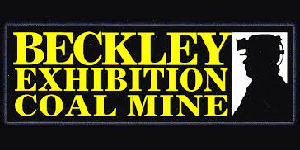 “At the Exhibition Coal Mine, visitors ride through the dark passages of a vintage coal mine. The guides are veteran miners and provide firsthand accounts of the daily responsibilities and travail of past and present-day miners.”
“At the Exhibition Coal Mine, visitors ride through the dark passages of a vintage coal mine. The guides are veteran miners and provide firsthand accounts of the daily responsibilities and travail of past and present-day miners.”
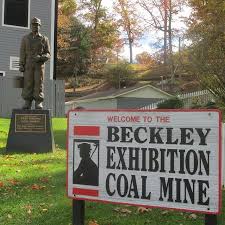 “Guests board a comfortable coal mine “man trip” that holds approximately 35 people for the duration of the whole tour. As the trip begins, guides give general information about the Mine and the history of coal mining in our region. The Beckley Exhibition Coal Mine is a “drift mine” and the track goes 1500 feet up and around various mined out areas. Stops are made at these areas and the veteran guides give in-depth information on the mining methods and equipment seen. The underground tour last approximately 35 minutes. Visitors are asked to bring a jacket because the temperature is always 58 degrees inside the Mine.”
“Guests board a comfortable coal mine “man trip” that holds approximately 35 people for the duration of the whole tour. As the trip begins, guides give general information about the Mine and the history of coal mining in our region. The Beckley Exhibition Coal Mine is a “drift mine” and the track goes 1500 feet up and around various mined out areas. Stops are made at these areas and the veteran guides give in-depth information on the mining methods and equipment seen. The underground tour last approximately 35 minutes. Visitors are asked to bring a jacket because the temperature is always 58 degrees inside the Mine.”
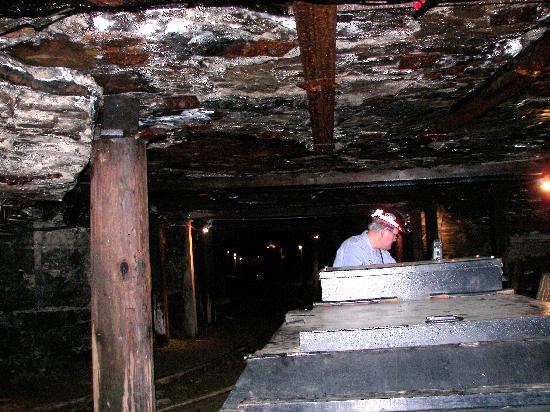 “In addition to the Mine, one can tour the period coal camp buildings situated throughout the grounds. Lovingly restored, the Coal Company House, Superintendent’s Home, Pemberton Coal Camp Church, and the Helen Coal Camp School, give visitors a true representation of early 20th century coal camp life.”
“In addition to the Mine, one can tour the period coal camp buildings situated throughout the grounds. Lovingly restored, the Coal Company House, Superintendent’s Home, Pemberton Coal Camp Church, and the Helen Coal Camp School, give visitors a true representation of early 20th century coal camp life.”
“Adjacent to the Exhibition Mine, the Youth Museum of Southern West Virginia is open to the public year round and available at any time for pre-arranged tour groups.” <<Information on the “Youth Museum of Southern West Virginia” is on the MH3WV “Museums” page
Explore “Beckley Exhibition Coal Mine” Website
“Sistersville Ferry” – Tyler Co.
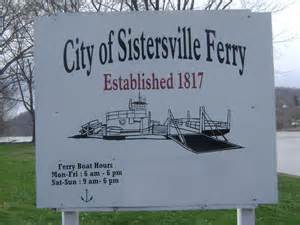
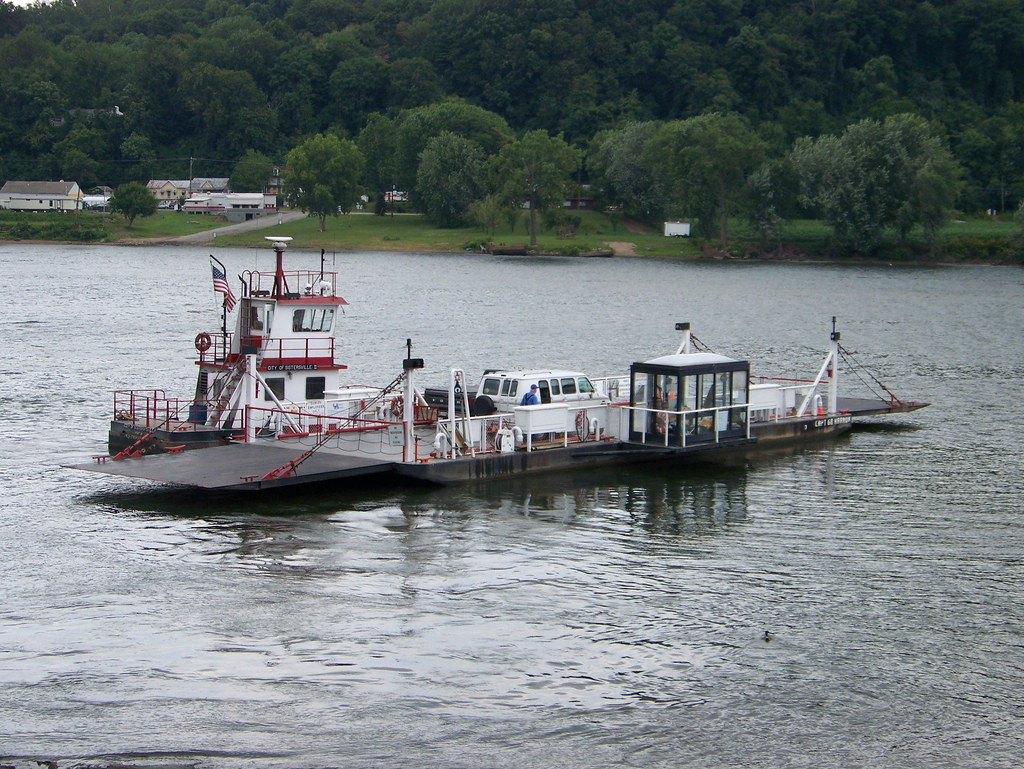
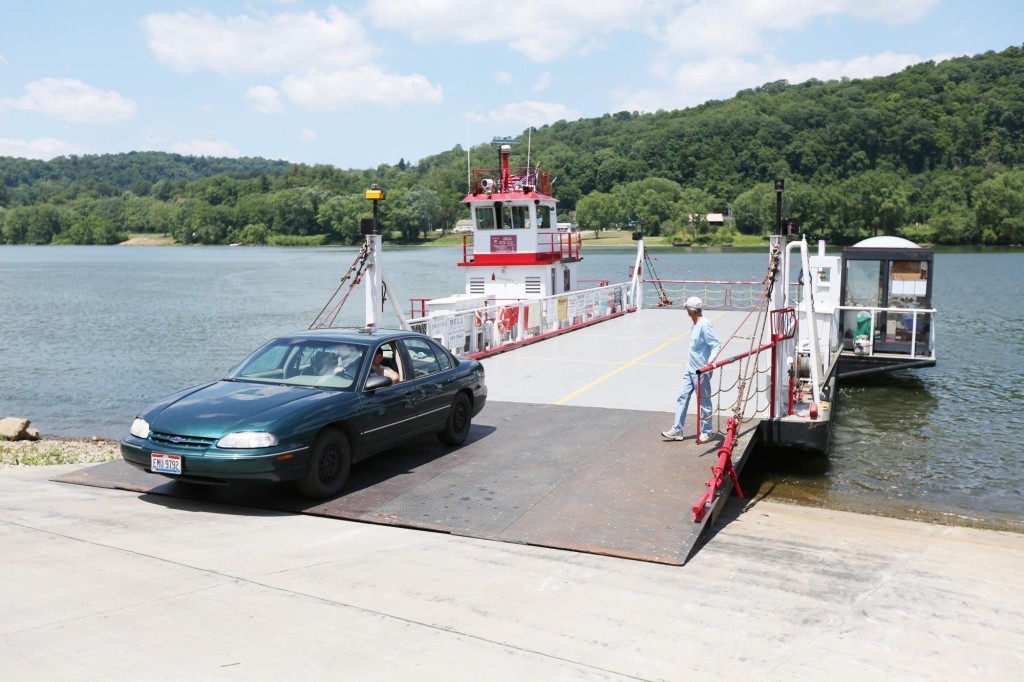
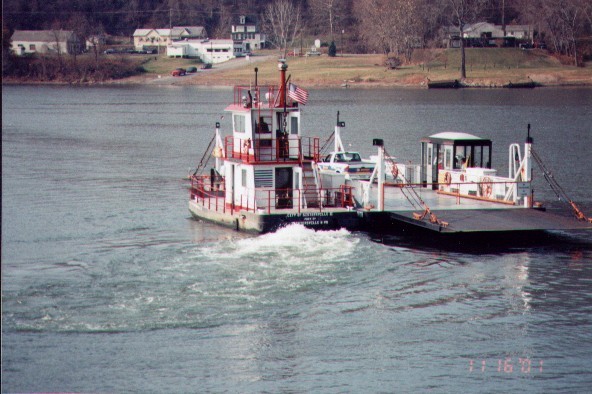 “First established in 1817, the Sistersville Ferry, located in Sistersville, West Virginia, makes the journey across the Ohio River over to Fly, Ohio. It takes roughly eight minutes to make the journey. In 1902, the Steam Ferry Boat Orion landed at Sistersville, W.Va. It operated between 1902 and 1907, when it was replaced by a similar boat the Daniel. Sistersville has one of the best Ferry systems along the Ohio River. The Ferry now is owned by the City of Sistersville.”
“First established in 1817, the Sistersville Ferry, located in Sistersville, West Virginia, makes the journey across the Ohio River over to Fly, Ohio. It takes roughly eight minutes to make the journey. In 1902, the Steam Ferry Boat Orion landed at Sistersville, W.Va. It operated between 1902 and 1907, when it was replaced by a similar boat the Daniel. Sistersville has one of the best Ferry systems along the Ohio River. The Ferry now is owned by the City of Sistersville.”
Explore “Sistersville Ferry” Website
“The Robert Lepper Mural Painting” – Monongalia Co.
 “White Hall, on West Virginia University’s downtown campus in Morgantown, hides a gem little known to the general population: in one of the classrooms resides a large mural created by painter Robert Lepper. Completed in 1942 and intended to represent the unity of art and science at West Virginia University, this mural is an impressive albeit easily-overlooked piece of West Virginia University history. In this study, we conducted an in-depth examination of the Lepper mural using several visual and analytical techniques, which together reveal interesting technical and artistic aspects of the work. In addition to furthering our knowledge about this historic piece, we hope to bring awareness of its grandeur to the greater university community so that it may be studied and enjoyed for years to come.”
“White Hall, on West Virginia University’s downtown campus in Morgantown, hides a gem little known to the general population: in one of the classrooms resides a large mural created by painter Robert Lepper. Completed in 1942 and intended to represent the unity of art and science at West Virginia University, this mural is an impressive albeit easily-overlooked piece of West Virginia University history. In this study, we conducted an in-depth examination of the Lepper mural using several visual and analytical techniques, which together reveal interesting technical and artistic aspects of the work. In addition to furthering our knowledge about this historic piece, we hope to bring awareness of its grandeur to the greater university community so that it may be studied and enjoyed for years to come.”
“Berdine’s Five and Dime” – Ritchie Co.
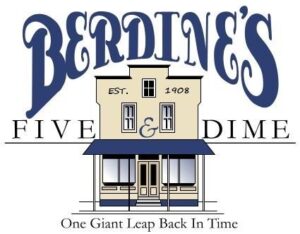
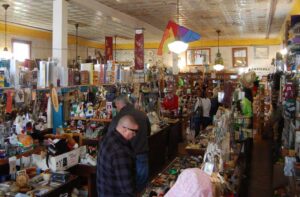 “Berdine’s Five and Dime has been in continuous operation in Harrisville, West Virginia since 1908. Today we continue our celebration of simpler times gone by when shopping was fun like a visit with good friends. Our family, the Six family, has been the owners of Berdine’s since purchasing it from Fred W. Berdine in 1983. When we acquired it, efforts to modernize and “compete” with newer and chain stores had led to decline. We removed much of the modernization: out went fluorescent lights, flower power bright plastic contact paper hiding older, darker solid oak counters came off, and the classic bins and price labels on the bins were dug out and put back in use. The electric cash register went as did many other “improvements.” Time rolled backward.”
“Berdine’s Five and Dime has been in continuous operation in Harrisville, West Virginia since 1908. Today we continue our celebration of simpler times gone by when shopping was fun like a visit with good friends. Our family, the Six family, has been the owners of Berdine’s since purchasing it from Fred W. Berdine in 1983. When we acquired it, efforts to modernize and “compete” with newer and chain stores had led to decline. We removed much of the modernization: out went fluorescent lights, flower power bright plastic contact paper hiding older, darker solid oak counters came off, and the classic bins and price labels on the bins were dug out and put back in use. The electric cash register went as did many other “improvements.” Time rolled backward.”
“John Henry Historical Park – ‘Home of the Steel Drivin’ Man’ ” – Summers Co.
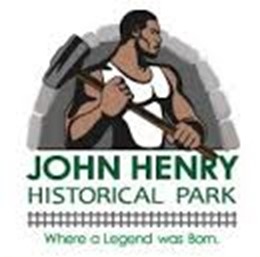
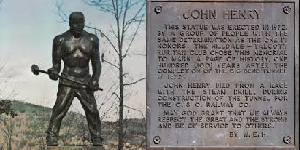
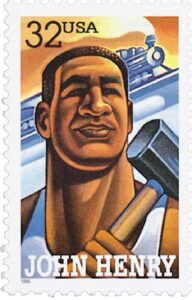 “John Henry is a beloved folk hero for having raced against a steam powered drill to prove worth of using the crew of men rather than machine and to hopefully, preserve the rail workers’ jobs. He proudly fought and won the epic battle, only to die in victory with his hammer in his hand. His legend is a reminder that America and all of its successes and advancements were buillt by everyday heroes like John Henry. The location of the epic contest between man and machine took place at the Great Bend Tunnel in Talcott, WV.”
“John Henry is a beloved folk hero for having raced against a steam powered drill to prove worth of using the crew of men rather than machine and to hopefully, preserve the rail workers’ jobs. He proudly fought and won the epic battle, only to die in victory with his hammer in his hand. His legend is a reminder that America and all of its successes and advancements were buillt by everyday heroes like John Henry. The location of the epic contest between man and machine took place at the Great Bend Tunnel in Talcott, WV.”
Explore “John Henry Historical Park” Website
“John Henry and the Coming of the Railroad” – National Park Service
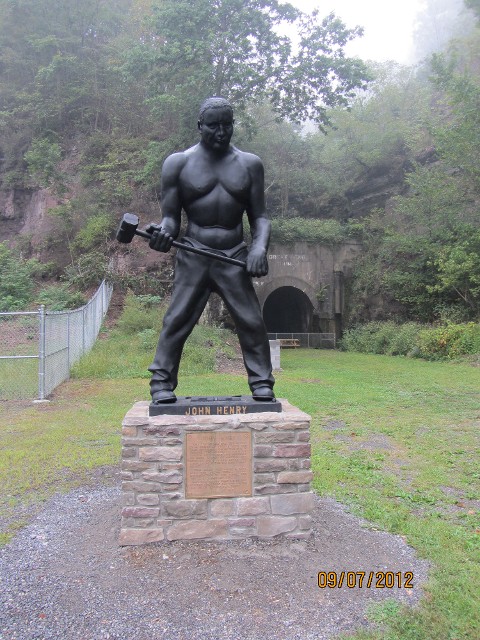 “Wherever you may find yourself in the New River Gorge, take the time to quietly listen. Intertwined with the sounds of nature; birdsong, flowing water, and wind through the trees you will most likely also hear the whistle of a train. The original Chesapeake and Ohio railroad company line was constructed, following the New River through the Gorge, between 1869 and 1872. This line is very active today with dozens of daily runs by CSX railway corporation coal and freight trains, and Amtrak’s Cardinal passenger line. . .
“Wherever you may find yourself in the New River Gorge, take the time to quietly listen. Intertwined with the sounds of nature; birdsong, flowing water, and wind through the trees you will most likely also hear the whistle of a train. The original Chesapeake and Ohio railroad company line was constructed, following the New River through the Gorge, between 1869 and 1872. This line is very active today with dozens of daily runs by CSX railway corporation coal and freight trains, and Amtrak’s Cardinal passenger line. . .
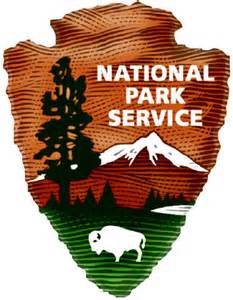 “The C&O railroad was built primarily by two groups of working men, thousands of African-Americans recently freed from enslavement, and recent Irish Catholic immigrants; both groups anxious to begin new lives for themselves and their families as American citizens. . . One of the greatest legends of world folklore was born from these workers and their enormous task; John Henry ‘The Steel Driving Man’. . .”
“The C&O railroad was built primarily by two groups of working men, thousands of African-Americans recently freed from enslavement, and recent Irish Catholic immigrants; both groups anxious to begin new lives for themselves and their families as American citizens. . . One of the greatest legends of world folklore was born from these workers and their enormous task; John Henry ‘The Steel Driving Man’. . .”
“How John Henry Became an American Folk Hero”
 “The railroad tracks that crisscross West Virginia pass through the state’s mountains – an engineering feat made possible by the steam-powered drill, or, according to legend, a man named John Henry.” (3:16/2014/Smithsonian Channel)
“The railroad tracks that crisscross West Virginia pass through the state’s mountains – an engineering feat made possible by the steam-powered drill, or, according to legend, a man named John Henry.” (3:16/2014/Smithsonian Channel)
“The Ballad of John Henry” “This is the Legendary Story of “John Henry.” “Johnny Cash Show – 1×23 [Ep 23] – [March 11 ’70]” (8:41/2010/PeterRabbit59)
“The Rumsey Monument” – Jefferson Co.
“Devoted to the history and inventions of James Rumsey.”
Explore “The Rumseian Society” Website – limited advertisements
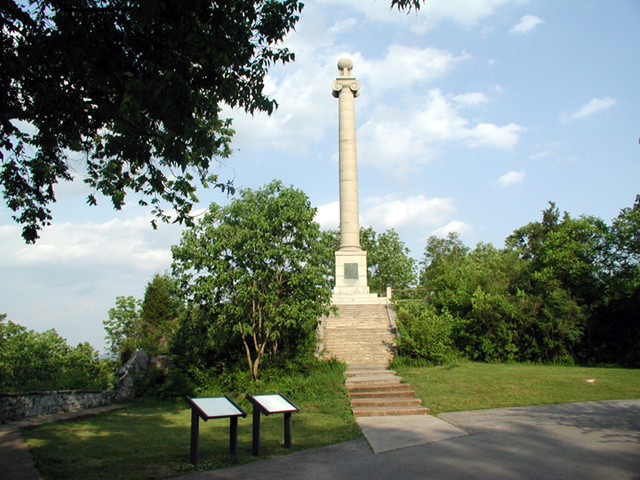
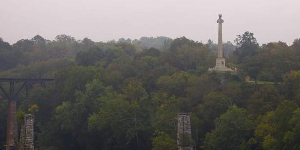 “Shepherdstonians, jealous at the success of Robert Fulton, had talked of building a monument to Rumsey as early as the 1830’s, but it was Congressman A R Boteler, an early Rumsey advocate, who first took steps to do it. Around 1890 he began corresponding with the Norfolk and Western Railroad for the present Shepherdstown site, where the railroad had a small quarry. But Boteler died in 1892. After his death, the railroad built a new bridge downstream and the line shifted, leaving both a promontory overlooking the river and room for a community park. . .”
“Shepherdstonians, jealous at the success of Robert Fulton, had talked of building a monument to Rumsey as early as the 1830’s, but it was Congressman A R Boteler, an early Rumsey advocate, who first took steps to do it. Around 1890 he began corresponding with the Norfolk and Western Railroad for the present Shepherdstown site, where the railroad had a small quarry. But Boteler died in 1892. After his death, the railroad built a new bridge downstream and the line shifted, leaving both a promontory overlooking the river and room for a community park. . .”
“Pringle Tree Park” – Upshur Co.
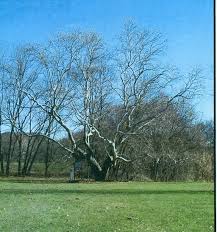
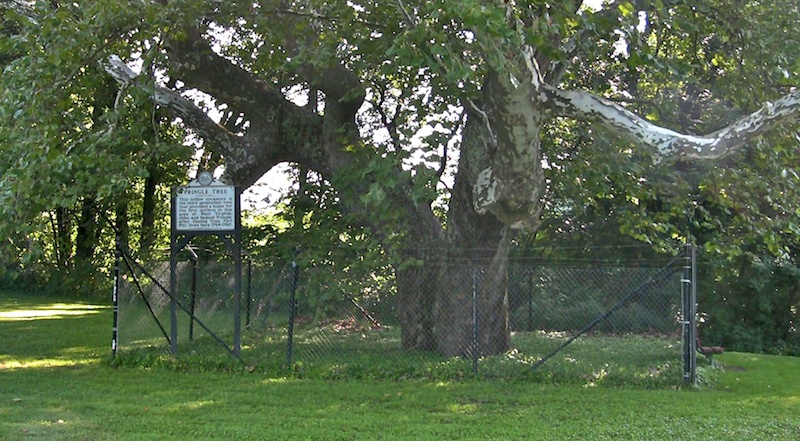 “One of the most notable historic landmarks is the Pringle Tree Park; the current park marks the first permanent settlement west of the Alleghenies in Virginia, settled by Samuel and John Pringle in 1764. The brothers lived in a hollowed Sycamore tree for 3 years and eventually began a permanent settlement with other emigrants.”
“One of the most notable historic landmarks is the Pringle Tree Park; the current park marks the first permanent settlement west of the Alleghenies in Virginia, settled by Samuel and John Pringle in 1764. The brothers lived in a hollowed Sycamore tree for 3 years and eventually began a permanent settlement with other emigrants.”
Explore Upshur County CVB’s “Pringle Tree Park” Website
“The Pringle Brothers and the Sycamore Tree” – Jackson Brigade Memorial Service
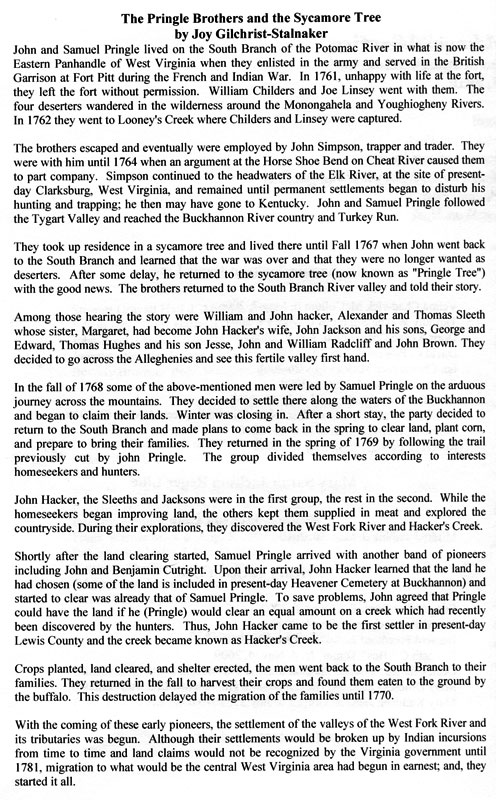
“Mason-Dixon Park” – Monongalia Co.
June 1, 2021
“Monongalia site marks end of the line for calibrators’ historic survey.”
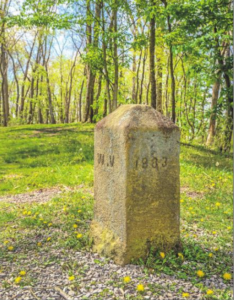
![]() “After two years of hacking their way west through the wilds of colonial America in a meticulously calibrated straight line, Charles Mason and Jeremiah Dixon . . .”
“After two years of hacking their way west through the wilds of colonial America in a meticulously calibrated straight line, Charles Mason and Jeremiah Dixon . . .”
Explore Charleston Gazette-Mail’s “Park Preserves Mason-Dixon History” article (pdf)
“Rosbey’s (Rosbby’s) Rock” – Marshall Co.
“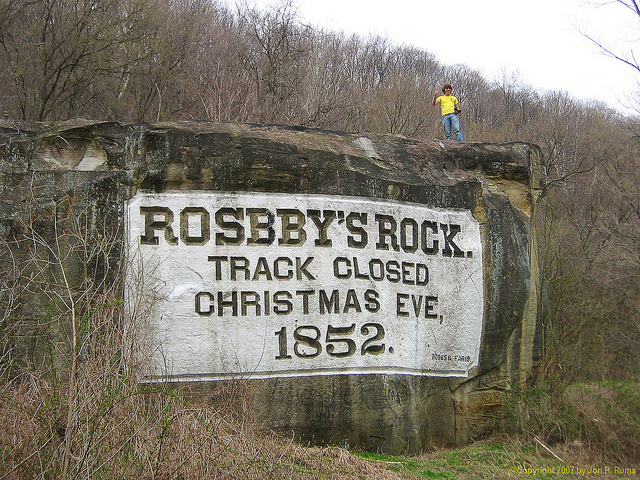 This rock is an obscure landmark in an obscure community in the West Virginia panhandle, but it deserves to be as well-known as the Golden Spike Natural Historical Site that marks the point at which the transcontinental railroad was completed. Roseby’s Rock is significant for an earlier event of similar importance in the embryonic days of American railroading. Near this point in a narrow valley southeast of Wheeling, the last spike was driven in the B&O Railroad on Christmas Eve 1852, closing the gap in the rail connection between Baltimore and the Ohio River at Wheeling. The rock was named for Roseby Carr, the B&O official in charge of construction in this territory. The celebration after the line’s completion may or may not have been responsible for the misspelling “Rosbby” chiseled into the big rock. The historic B&O line through Roseby’s Rock was abandoned years ago.” – Jon R. Roma
This rock is an obscure landmark in an obscure community in the West Virginia panhandle, but it deserves to be as well-known as the Golden Spike Natural Historical Site that marks the point at which the transcontinental railroad was completed. Roseby’s Rock is significant for an earlier event of similar importance in the embryonic days of American railroading. Near this point in a narrow valley southeast of Wheeling, the last spike was driven in the B&O Railroad on Christmas Eve 1852, closing the gap in the rail connection between Baltimore and the Ohio River at Wheeling. The rock was named for Roseby Carr, the B&O official in charge of construction in this territory. The celebration after the line’s completion may or may not have been responsible for the misspelling “Rosbby” chiseled into the big rock. The historic B&O line through Roseby’s Rock was abandoned years ago.” – Jon R. Roma
“The inscribed boulder marks the spot, where on Dec. 24, 1852, the rails of the B&O were joined forming a railroad link between Baltimore (the Atlantic Ocean) and the Ohio River. This site is the original Promontory Point linking the two water drainages. Construction of the railroad was started on July 4, 1928, and its completion represented one of the major milestones in United States history and development. The railroad aided commerce and westward expansion.” – West Virginia Tourism
“Parkette / Shoney’s” – Kanawha Co.
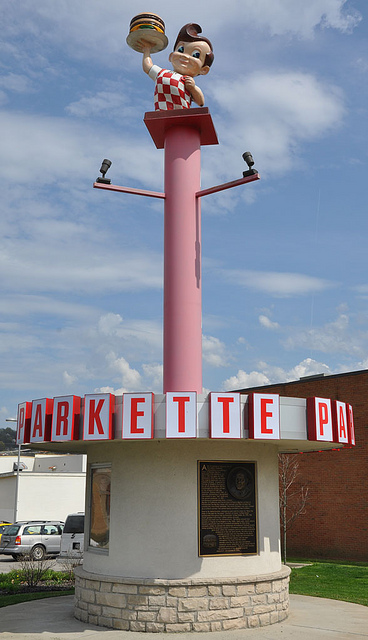 “
“ Outdoor mini-exhibit on 1947 founding of a fast food chain. The historical plaque credits Alex Schoenbaum with starting what became Shoney’s Big Boy as the Parkette Drive-In here. He expanded his Shoney’s chain over 40 years to include 1,900 restaurants. At the very west end of Kanawha Blvd., as it curves to join with the Patrick Street bridge, is a lonely structure commemorating the location of the very first Shoney’s restaurant. The forgotten Big Boy mascot stands at the top of a pedestal, forever holding up his Big Boy Burger. The sign directing visitors calls it a museum, but there is no inside. Just a few windows full of memorabilia & a plaque giving the history of the restaurant and its founder. I only spotted one tiny keychain bear. I guess he and Big Boy aren’t on speaking terms, seeing that the furry guy replaced him.” (From “RoadsideAmerica.com)
Outdoor mini-exhibit on 1947 founding of a fast food chain. The historical plaque credits Alex Schoenbaum with starting what became Shoney’s Big Boy as the Parkette Drive-In here. He expanded his Shoney’s chain over 40 years to include 1,900 restaurants. At the very west end of Kanawha Blvd., as it curves to join with the Patrick Street bridge, is a lonely structure commemorating the location of the very first Shoney’s restaurant. The forgotten Big Boy mascot stands at the top of a pedestal, forever holding up his Big Boy Burger. The sign directing visitors calls it a museum, but there is no inside. Just a few windows full of memorabilia & a plaque giving the history of the restaurant and its founder. I only spotted one tiny keychain bear. I guess he and Big Boy aren’t on speaking terms, seeing that the furry guy replaced him.” (From “RoadsideAmerica.com)
The Parkette Is considered by many to be the birth of the entire fast food industry.
“Got Shoney’s?”
“Big Boy gets his own memorial in a tribute to the Shoney’s Restaurant chain, which began as The Parkette, a Charleston institution founded soon after the end of World War II. In this SoundSlides for the Charleston Gazette, get a glimpse of the monument.” (2:42/2009/douglaseye)
“World’s Largest Teapot” – Hancock Co.
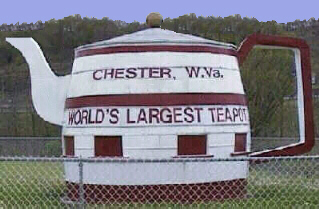 “1938 — The Chester Teapot was constructed by William “Babe” Devon. The Teapot started its life as a gigantic wooden hogshead barrel for a Hire’s Root Beer advertising campaign. Devon purchased the barrel in Pennsylvania and had it shipped to Chester where it was set up on Carolina Avenue, which is also State Route 2. A spout and handle were added at this time and the wooden barrel was covered with tin to form the teapot’s shape. A large glass ball was placed on top to make the knob of the “lid”. The Teapot stood in front of Devon’s pottery outlet store. Local teenagers were hired to run a concession and souvenir stand which was set up inside the Teapot. . .”
“1938 — The Chester Teapot was constructed by William “Babe” Devon. The Teapot started its life as a gigantic wooden hogshead barrel for a Hire’s Root Beer advertising campaign. Devon purchased the barrel in Pennsylvania and had it shipped to Chester where it was set up on Carolina Avenue, which is also State Route 2. A spout and handle were added at this time and the wooden barrel was covered with tin to form the teapot’s shape. A large glass ball was placed on top to make the knob of the “lid”. The Teapot stood in front of Devon’s pottery outlet store. Local teenagers were hired to run a concession and souvenir stand which was set up inside the Teapot. . .”
Explore Chester Library’s “History of the World’s Largest Teapot” Webpage to continue reading
“Our Lady Of The Pines – Smallest Church in 48 States”
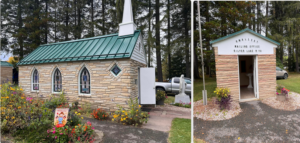
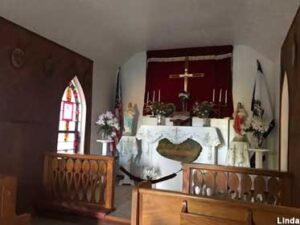 “Reflect at one of the six pews inside the smallest church in 48 states. “Our Lady Of The Pines” is a small, well-kept Roman Catholic church open to visitors year-round. It has been promoted as the “Smallest Church in 48 States.” Even today, a sign makes this claim to fame a reality. The church contains seating for 12, and the exterior measures 24 ft. x 12 ft. That makes it less dainty, if no less divine, than a number of tinier churches. A bonus attraction is right behind “Our Lady of the Pines”: The “World’s Smallest Post Office,” serving the community of Silver Lake.”
“Reflect at one of the six pews inside the smallest church in 48 states. “Our Lady Of The Pines” is a small, well-kept Roman Catholic church open to visitors year-round. It has been promoted as the “Smallest Church in 48 States.” Even today, a sign makes this claim to fame a reality. The church contains seating for 12, and the exterior measures 24 ft. x 12 ft. That makes it less dainty, if no less divine, than a number of tinier churches. A bonus attraction is right behind “Our Lady of the Pines”: The “World’s Smallest Post Office,” serving the community of Silver Lake.”
“The Coal House” – Mingo Co.
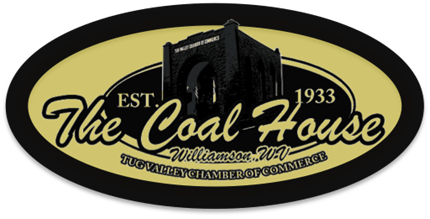
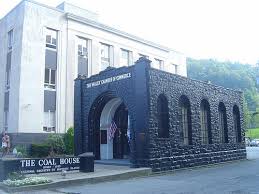 “Weighing in at 65 tons with 2 ft. thick walls, it’s . . . made entirely of coal. Built in 1933, it was designed by architect H.T. Hicks from an idea by O. W. Evans. It was constructed from blocks of local seam coal donated by coal companies in the region. Williamson’s coal house doesn’t really look like a house — and no one has lived in it as far as we know. It served for many years to promote the county, and continues as the office for the Tug Valley Chamber of Commerce. In October 2010, the Williamson Coal House was gutted by a fire, but its exterior survived fairly intact. It was repaired and reopened to visitors in September 2011.” – From Roadside America website
“Weighing in at 65 tons with 2 ft. thick walls, it’s . . . made entirely of coal. Built in 1933, it was designed by architect H.T. Hicks from an idea by O. W. Evans. It was constructed from blocks of local seam coal donated by coal companies in the region. Williamson’s coal house doesn’t really look like a house — and no one has lived in it as far as we know. It served for many years to promote the county, and continues as the office for the Tug Valley Chamber of Commerce. In October 2010, the Williamson Coal House was gutted by a fire, but its exterior survived fairly intact. It was repaired and reopened to visitors in September 2011.” – From Roadside America website
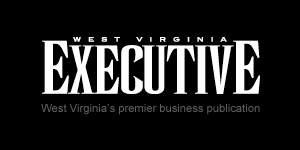
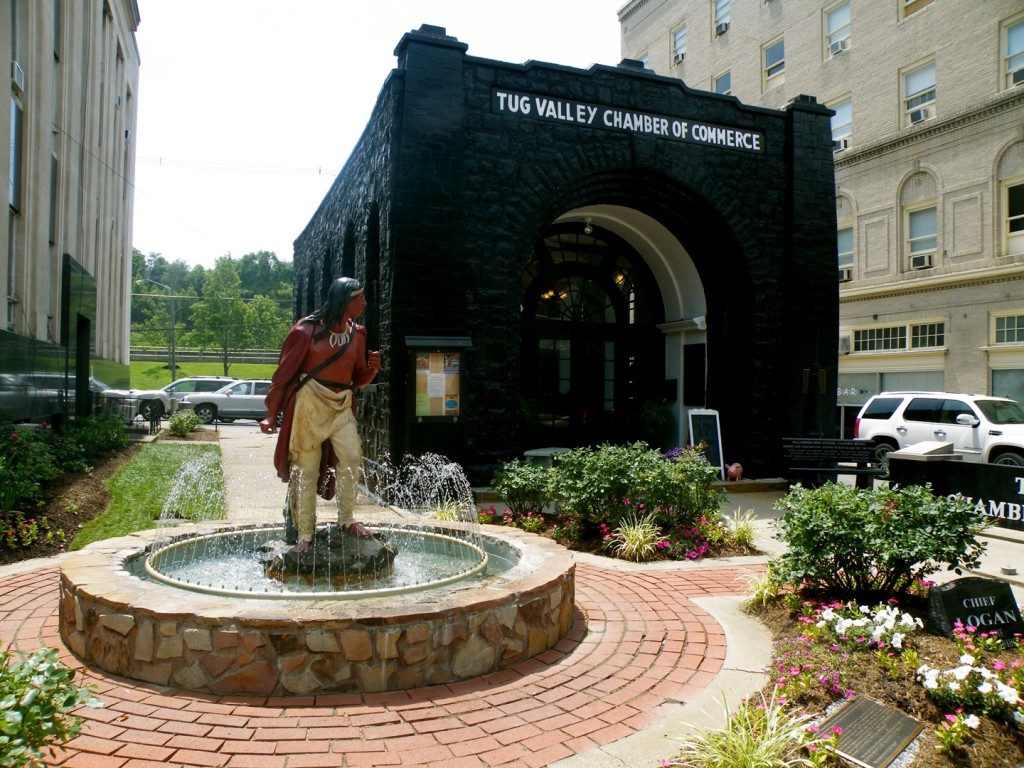 “In the “Heart of the Billion Dollar Coal Field” lies one of the most unique tributes to the rich economic resource that supports the Southern West Virginia region and the state as a whole. In downtown Williamson sits The Coal House, the Mingo County tribute to “the other black gold.” This building, which currently houses the Tug Valley Chamber of Commerce and the Williamson Visitor Center, is constructed of 65 tons of bituminous coal from the local Winifrede seam. . .”
“In the “Heart of the Billion Dollar Coal Field” lies one of the most unique tributes to the rich economic resource that supports the Southern West Virginia region and the state as a whole. In downtown Williamson sits The Coal House, the Mingo County tribute to “the other black gold.” This building, which currently houses the Tug Valley Chamber of Commerce and the Williamson Visitor Center, is constructed of 65 tons of bituminous coal from the local Winifrede seam. . .”
“Another Coal House” – Greenbrier Co.
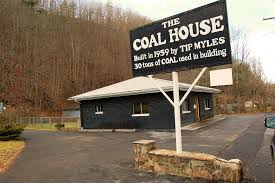
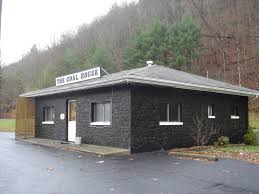
“The Berkeley Springs Castle” – Morgan Co.
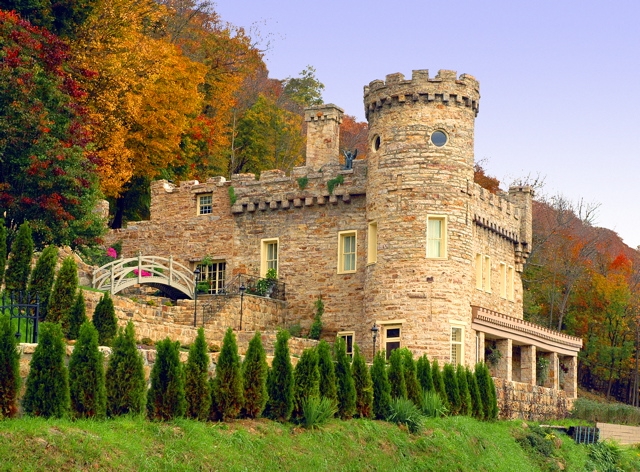
“Welcome to stately Berkeley Castle, one of West Virginia’s most recognizable structures. Included on the National Registry of Historic Places, this fascinating hilltop edifice is said to have been inspired by Berkeley Castle of Gloucestershire, England.
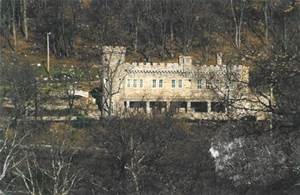 “
“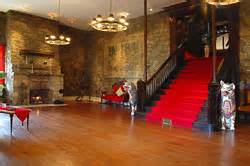 Built by 100 German masons over 6 years, the 9,300 square foot castle is constructed of local silica sandstone, painstakingly brought to the property by horse and carriage in the Guilded Age. The castle has been modernized over the years while retaining its classic charm, including a lavish ballroom complete with 2 stone fireplaces and grand staircase. With a dungeon tucked into a secret passageway, gargoyles providing stony vigilance, steep topography maximizing natural defense, and a turreted rooftop with battlements and a spectacular view, the castle hearkens back to European traditions.”
Built by 100 German masons over 6 years, the 9,300 square foot castle is constructed of local silica sandstone, painstakingly brought to the property by horse and carriage in the Guilded Age. The castle has been modernized over the years while retaining its classic charm, including a lavish ballroom complete with 2 stone fireplaces and grand staircase. With a dungeon tucked into a secret passageway, gargoyles providing stony vigilance, steep topography maximizing natural defense, and a turreted rooftop with battlements and a spectacular view, the castle hearkens back to European traditions.”
Explore “Berkeley Springs Castle” Website (1:29/2020/ Berkeley Springs Castle )
“Hanging Rock Raptor Observatory” – Monroe Co.
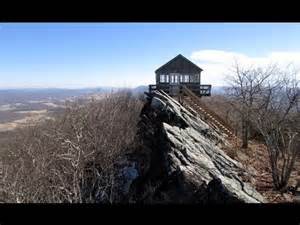
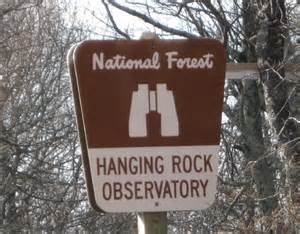 “Hanging Rock Raptor Observatory on Peter’s Mountain in Monroe County, West Virginia, is a former fire tower now used to monitor raptor migration. Every year, starting around the first of September, volunteers man the tower to watch for migrating hawks, eagles, falcons, and ospreys. . .
“Hanging Rock Raptor Observatory on Peter’s Mountain in Monroe County, West Virginia, is a former fire tower now used to monitor raptor migration. Every year, starting around the first of September, volunteers man the tower to watch for migrating hawks, eagles, falcons, and ospreys. . . 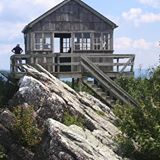 Hanging Rock Tower is a simple forest service fire tower on top of a mountain. Its proximity to the Allegheny Trail allows for year-round casual visitors, but most of the birding activity takes place during the fall migration season which runs from the middle of August through November. There is no electricity, running water, or bathroom facilities other than an outdoor privy (which we keep as clean as possible). You need to be sure to take drinking water. Other items you may want to take are binoculars, food, sunglasses, an extra layer of clothing (it is sometimes a different world on top of the hill), sunscreen, hat, bird books, and comfortable hiking shoes.”
Hanging Rock Tower is a simple forest service fire tower on top of a mountain. Its proximity to the Allegheny Trail allows for year-round casual visitors, but most of the birding activity takes place during the fall migration season which runs from the middle of August through November. There is no electricity, running water, or bathroom facilities other than an outdoor privy (which we keep as clean as possible). You need to be sure to take drinking water. Other items you may want to take are binoculars, food, sunglasses, an extra layer of clothing (it is sometimes a different world on top of the hill), sunscreen, hat, bird books, and comfortable hiking shoes.”
Explore “Hanging Rock Raptor Observatory” Website
![]() “It’s Telemetry” – “A new radio telemetry system is augmenting the work of volunteers who keep track of migrating birds flying past the Hanging Rock Raptor Observatory . . .”
“It’s Telemetry” – “A new radio telemetry system is augmenting the work of volunteers who keep track of migrating birds flying past the Hanging Rock Raptor Observatory . . .”
Explore Charleston Gazette-Mail’s “It’s Telemetry” article to continue reading (pdf)
 “This former fire tower is now a rustic observatory that offers amazing views of eagles, hawks, and the Appalachian Mountains. Always wanted a birds-eye view of the valleys in the Appalachian Mountains? This wondrous observatory is paired with an amazing journey through the mountains and small towns of West Virginia. The structure located at the top of Peters Mountain was originally built in 1956 as a fire lookout. The lookout was shut down in 1972, and in 1983 the tower and its surrounding land were acquired by the U.S. Forest Service and became part of the Jefferson National Forest. Even before the tower was built, this spot was popular for birdwatching. The earliest records from Hanging Rock date back to 1952, when professors from Marshall University and Concord College performed annual raptor counts around the site. It proved to be a good location for observing migrating hawks, eagles, falcons, and osprey. After the Forest Service took over the site, local birding groups helped restore the ailing structure and turn it into a wildlife observation space. The tower was reinforced and a new deck and steps were built to make it more accessible. After vandals set fire to the tower in 1996, it was rebuilt and reopened the following year—though just as rustic as it had been before. Recently, the West Virginia Department of Natural Resources installed a set of radio antennas at the observatory. These antennas can pick up signals from radio transmitters that have been implanted in animals. Researchers can use tracking software to identify tagged animals and gather data about their movements. This observatory is for more than just bird-watchers. There is no electricity or running water at the site, but it features an outhouse and a small cabin. A one-mile hike from the trailhead leads to marvelous views. If you are a fan of bird-watching, there are many opportunities to see various species.” (2:37/2021/SkyCamWV)
“This former fire tower is now a rustic observatory that offers amazing views of eagles, hawks, and the Appalachian Mountains. Always wanted a birds-eye view of the valleys in the Appalachian Mountains? This wondrous observatory is paired with an amazing journey through the mountains and small towns of West Virginia. The structure located at the top of Peters Mountain was originally built in 1956 as a fire lookout. The lookout was shut down in 1972, and in 1983 the tower and its surrounding land were acquired by the U.S. Forest Service and became part of the Jefferson National Forest. Even before the tower was built, this spot was popular for birdwatching. The earliest records from Hanging Rock date back to 1952, when professors from Marshall University and Concord College performed annual raptor counts around the site. It proved to be a good location for observing migrating hawks, eagles, falcons, and osprey. After the Forest Service took over the site, local birding groups helped restore the ailing structure and turn it into a wildlife observation space. The tower was reinforced and a new deck and steps were built to make it more accessible. After vandals set fire to the tower in 1996, it was rebuilt and reopened the following year—though just as rustic as it had been before. Recently, the West Virginia Department of Natural Resources installed a set of radio antennas at the observatory. These antennas can pick up signals from radio transmitters that have been implanted in animals. Researchers can use tracking software to identify tagged animals and gather data about their movements. This observatory is for more than just bird-watchers. There is no electricity or running water at the site, but it features an outhouse and a small cabin. A one-mile hike from the trailhead leads to marvelous views. If you are a fan of bird-watching, there are many opportunities to see various species.” (2:37/2021/SkyCamWV)
“NROCKS Outdoor Adventures” – Pendleton Co.
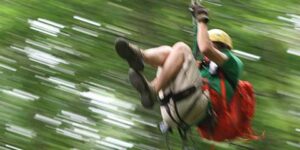
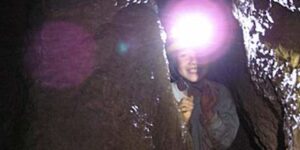
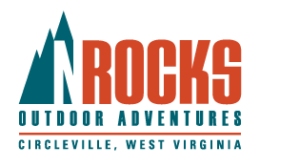
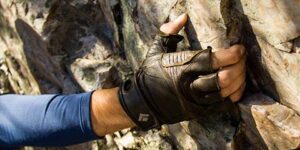 “NROCKS Outdoor Adventures (formerly Nelson Rocks Adventure Center) is the premiere guided climbing center in West Virginia and the North Fork Valley Region. NROCKS offers Sport Climbing, Top Rope Climbing, Zip Lines, guided Canopy Tours as well as the Nation’s Premiere Via Ferrata. NROCKS provides top quality equipment from CMI for all activities!
“NROCKS Outdoor Adventures (formerly Nelson Rocks Adventure Center) is the premiere guided climbing center in West Virginia and the North Fork Valley Region. NROCKS offers Sport Climbing, Top Rope Climbing, Zip Lines, guided Canopy Tours as well as the Nation’s Premiere Via Ferrata. NROCKS provides top quality equipment from CMI for all activities!
“Via Ferrata at Nelson Rocks 2019”
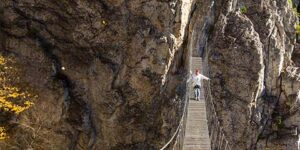 “Ever wanted to experience rock climbing? In the hills of West Virginia near the famous Seneca Rocks is a little place called Nelson Rocks, a crazy rock formation reminding you of “fins” rising from the mountainside. And whats more? They have a Via Ferrata woven through the formation to give you the perfect rock climbing experience for any skill level.” (3:08/2019/Prop Logic Media)
“Ever wanted to experience rock climbing? In the hills of West Virginia near the famous Seneca Rocks is a little place called Nelson Rocks, a crazy rock formation reminding you of “fins” rising from the mountainside. And whats more? They have a Via Ferrata woven through the formation to give you the perfect rock climbing experience for any skill level.” (3:08/2019/Prop Logic Media)
“Allegheny Mountain Radio” – Pocahontas Co.

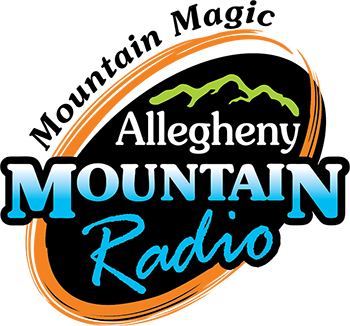 “Allegheny Mountain Radio is a network of three community stations which are public and non-commercial. They are operated by volunteers and a small paid staff. Pocahontas Communications Cooperative, the licensee of the stations, is a non-profit organization formed in April 1979 for educational and charitable purposes and to operate community radio stations. Financial support is derived from individual donations, business underwriting, and grants. Allegheny Mountain Radio serves the Allegheny Highlands of the two Virginias. Our coverage area includes Pocahontas County in West Virginia and Bath and Highland County in Virginia.”
“Allegheny Mountain Radio is a network of three community stations which are public and non-commercial. They are operated by volunteers and a small paid staff. Pocahontas Communications Cooperative, the licensee of the stations, is a non-profit organization formed in April 1979 for educational and charitable purposes and to operate community radio stations. Financial support is derived from individual donations, business underwriting, and grants. Allegheny Mountain Radio serves the Allegheny Highlands of the two Virginias. Our coverage area includes Pocahontas County in West Virginia and Bath and Highland County in Virginia.”
Explore “Allegheny Mountain Radio” Website
“Burning Rock Off-Road Park”
“Off Road for the Whole Family”
 “Burning Rock Off Road Park is the perfect alternative to your everyday beaten path. The park, located just 3.5 miles from the town of Sophia, is situated on 10,000 acres and offers over 100 miles of trails ranging from the “family friendly” Tams Loop to the “winch recommended, enter at your own risk” favorite – The Amazon. There are trails for every type of bike, atv, utv or Jeep and every type of rider from novice to pro.”
“Burning Rock Off Road Park is the perfect alternative to your everyday beaten path. The park, located just 3.5 miles from the town of Sophia, is situated on 10,000 acres and offers over 100 miles of trails ranging from the “family friendly” Tams Loop to the “winch recommended, enter at your own risk” favorite – The Amazon. There are trails for every type of bike, atv, utv or Jeep and every type of rider from novice to pro.”
Explore “Burning Rock Off-Road Park” commercial website
“Summit Point Motorsports Park”

“Hatfield-McCoy Trails”
 “
“ The Hatfield-McCoy Trails are made up of over 700+ miles of trails located in the rich mountains of southern West Virginia. As one of the largest off-highway vehicle trail systems in the world, Hatfield-McCoy Trails is open 365 days a year and offers something for every skill level.”
The Hatfield-McCoy Trails are made up of over 700+ miles of trails located in the rich mountains of southern West Virginia. As one of the largest off-highway vehicle trail systems in the world, Hatfield-McCoy Trails is open 365 days a year and offers something for every skill level.”
Explore “Hatfield-McCoy Trails” Website
“West Virginia Trail Inventory”
 “
“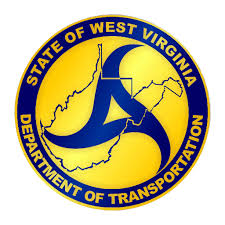
![]() The West Virginia Trail Inventory project is funded by the West Virginia Division of Highways to inventory, collect, and integrate all publicly accessible trails in West Virginia. Currently there are approximately 4,000 miles of inventoried trails in West Virginia.”
The West Virginia Trail Inventory project is funded by the West Virginia Division of Highways to inventory, collect, and integrate all publicly accessible trails in West Virginia. Currently there are approximately 4,000 miles of inventoried trails in West Virginia.”
Explore “West Virginia Trail Inventory” Website
“State Trail Systems Benefit from ARC Grant”
September 26, 2021
![]() “Funds to promote the premier pedaling and paddling trails in 15 northern counties and connect Elk River Rail and Water Trail users with . . .”
“Funds to promote the premier pedaling and paddling trails in 15 northern counties and connect Elk River Rail and Water Trail users with . . .”
“The Coal River ‘Walhonde’ Water Trail”
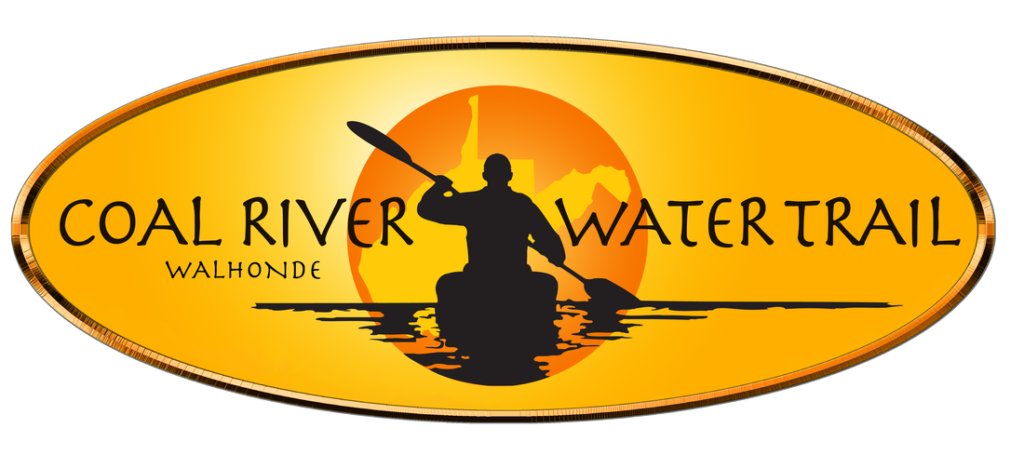 “The Coal River “Walhonde” Water Trail is an 88-mile long designated river trail for paddlers. The trail covers nearly the entire length of the Big, Little, and main Coal Rivers and features Department of Natural Resources boat launches for accessing the rivers.”
“The Coal River “Walhonde” Water Trail is an 88-mile long designated river trail for paddlers. The trail covers nearly the entire length of the Big, Little, and main Coal Rivers and features Department of Natural Resources boat launches for accessing the rivers.”
Explore “Coal River ‘Walhonde’ Water Trail” Website – includes multiple maps
“Hiking Trails”
Some trails also allow Bicycling and/or Horseback Riding.
“Trails in West Virginia”
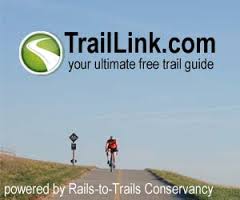 “Explore West Virginia trails and find comprehensive trail guides including West Virginia trail maps, descriptions, photos and reviews. Whether you’re getting outdoors for recreation, fitness, commuting or travel you’ll discover top trails for bicycling, hiking, running and more on TrailLink.com. Get outdoors and explore all West Virginia has to offer including popular trails like Blackwater Canyon Trail and Allegheny Highlands Trail. With more than 59 trails, you’re bound to find one perfect for you.”
“Explore West Virginia trails and find comprehensive trail guides including West Virginia trail maps, descriptions, photos and reviews. Whether you’re getting outdoors for recreation, fitness, commuting or travel you’ll discover top trails for bicycling, hiking, running and more on TrailLink.com. Get outdoors and explore all West Virginia has to offer including popular trails like Blackwater Canyon Trail and Allegheny Highlands Trail. With more than 59 trails, you’re bound to find one perfect for you.”
Explore TrailLink’s “Trails in West Virginia” Website
“Appalachian Trail”
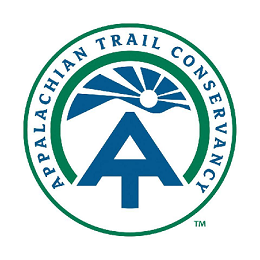 “Overseeing the management and conservation of the Appalachian National Scenic Trail since 1925. The mission of the Appalachian Trail Conservancy is to protect, manage, and advocate for the Appalachian National Scenic Trail. ATC’s administrative headquarters are located in Harper’s Ferry, West Virginia.”
“Overseeing the management and conservation of the Appalachian National Scenic Trail since 1925. The mission of the Appalachian Trail Conservancy is to protect, manage, and advocate for the Appalachian National Scenic Trail. ATC’s administrative headquarters are located in Harper’s Ferry, West Virginia.”
Explore “Appalachian Trail Conservancy” Website
“Potomac Appalachian Trail Club”
![]() “The Potomac Appalachian Trail Club is a volunteer-based organization headquartered in Vienna, Virginia. The PATC was founded in 1927 by the visionaries who planned and built the Appalachian Trail. The club now manages more than 1,050 miles of hiking trails in the Mid-Atlantic region, along with cabins, shelters, and hundreds of acres of conserved land.”
“The Potomac Appalachian Trail Club is a volunteer-based organization headquartered in Vienna, Virginia. The PATC was founded in 1927 by the visionaries who planned and built the Appalachian Trail. The club now manages more than 1,050 miles of hiking trails in the Mid-Atlantic region, along with cabins, shelters, and hundreds of acres of conserved land.”
Explore “Potomac Appalachian Trail Club” Website
“West Virginia Scenic Trails Association”
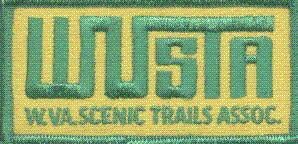 “The West Virginia Scenic Trails Association (WVSTA) is a nonprofit organization founded in the early 1970s and staffed entirely by volunteers.”
“The West Virginia Scenic Trails Association (WVSTA) is a nonprofit organization founded in the early 1970s and staffed entirely by volunteers.”
Explore “West Virginia Scenic Trails Association” Website
“Allegheny Trail”
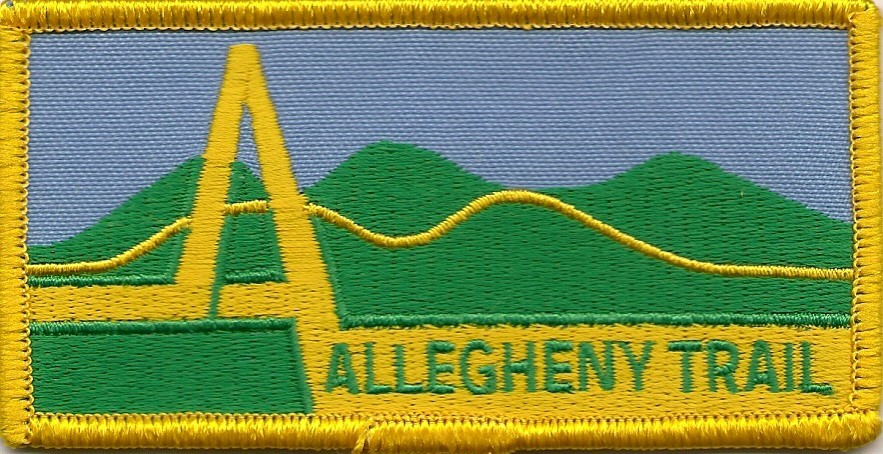
 “The Allegheny Trail is a 287.81-mile north-south trail with its northern terminus on the Mason-Dixon Line at the Pennsylvania-West Virginia border near Bruceton Mills. It wends its way south until it meets the Appalachian Trail on Peters Mountain at the Virginia-West Virginia border. Volunteer workers (with crucial assistance from U.S. Forest Service and State Park staff) maintain all sections of the Allegheny Trail, which is marked by 2″x 6″ yellow blazes.”
“The Allegheny Trail is a 287.81-mile north-south trail with its northern terminus on the Mason-Dixon Line at the Pennsylvania-West Virginia border near Bruceton Mills. It wends its way south until it meets the Appalachian Trail on Peters Mountain at the Virginia-West Virginia border. Volunteer workers (with crucial assistance from U.S. Forest Service and State Park staff) maintain all sections of the Allegheny Trail, which is marked by 2″x 6″ yellow blazes.”
Explore “The Allegheny Trail” Website
“Great Eastern Trail”

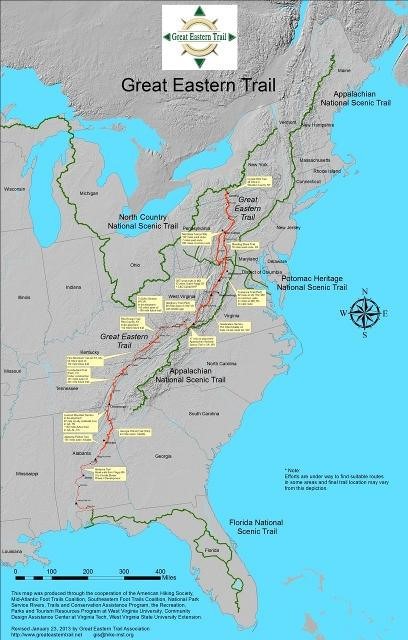 “The Great Eastern Trail is a project of the Great Eastern Trail Association, working with the American Hiking Society and local trail partners, to create America’s newest long distance trail for hikers from Alabama to New York!”
“The Great Eastern Trail is a project of the Great Eastern Trail Association, working with the American Hiking Society and local trail partners, to create America’s newest long distance trail for hikers from Alabama to New York!”
“The Great Eastern Trail will provide a 2000 mile hiking experience in the western Appalachian Mountains. It will connect pre-existing trails (like the Mary Ingles, Allegheny, Tuscarora, and Appalachian Trails in West Virginia) and existing outdoor recreation areas from Alabama to New York. This mighty trail will cross eight counties in West Virginia: Mingo, Wyoming, Mercer, Raleigh, Summers, Monroe, Greenbrier, & Pocahontas.”
Explore “The Great Eastern Trail” Website
Explore “The Great Eastern Trail Map” – Click on the map for larger version–Click on “Get Info” for more details.
“American Discovery Trail”
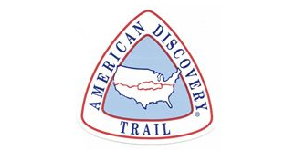 “The American Discovery Trail is the only coast-to-coast trail connecting national scenic, historic and recreational trails to showcase our county’s history, beauty and hidden treasures.”
“The American Discovery Trail is the only coast-to-coast trail connecting national scenic, historic and recreational trails to showcase our county’s history, beauty and hidden treasures.”
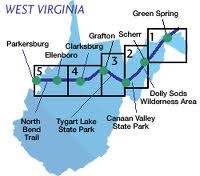 “The American Discovery Trail is a new breed of national trail — part city, part small town, part forest, part mountains, part desert — all in one trail. Its 6,800+ miles of continuous, multi-use trail stretches from Cape Henlopen State Park, Delaware, to Pt. Reyes National Seashore, California. It reaches across America, linking community to community in the first coast to coast, non-motorized trail. The ADT provides trail users the opportunity to journey into the heart of all that is uniquely American — its culture, heritage, landscape and spirit.”
“The American Discovery Trail is a new breed of national trail — part city, part small town, part forest, part mountains, part desert — all in one trail. Its 6,800+ miles of continuous, multi-use trail stretches from Cape Henlopen State Park, Delaware, to Pt. Reyes National Seashore, California. It reaches across America, linking community to community in the first coast to coast, non-motorized trail. The ADT provides trail users the opportunity to journey into the heart of all that is uniquely American — its culture, heritage, landscape and spirit.”

Explore “American Discovery Trail” Website
Explore American Discovery Trail’s “West Virginia Information” Website
“Mountain State Rail Trails”
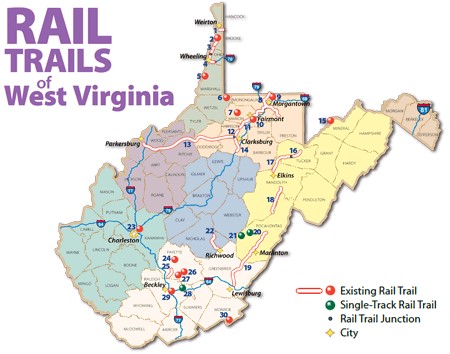
“Over 375 miles of train tracks have been converted into trails for walking, hiking, biking and horseback riding. The rail trails, with their gentle or level grades and wide rights of way, are easily accessible and are among the most beautiful and scenic in the country. With almost 30 rail trails dispersed throughout the state, enjoying the outdoors becomes easy and fun for all ages.”
Explore West Virginia Tourism’s “Mountain State Rail Trails” Website
<<More information about the North Bend Rail Trail and the Greenbrier RiverTrail is on the State Parks and Forests page>>
“Skiing in West Virginia”
“ There’s something for everyone at the West Virginia ski resorts!”
There’s something for everyone at the West Virginia ski resorts!”
Explore “Ski West Virginia” commercial website
Click on ski resort logos below to explore commercial websites:
“Agricultural Extension Division Community Histories”
“The obligation rests on us to maintain strong and virile rural communities. Among the hills of West Virginia are hundreds of communities containing from 25 to one hundred families where the spirit to meet this obligation exists.”
 “These remarks, made by the director of the West Virginia University Agricultural Extension Division, marked an ongoing effort to focus the attention of outside agencies on rural communities. In October 1921 a country community score card was developed, which listed specific standards or goals under nine headings–history, government, business, farm, clubs, homes, schools, churches and health. As a result of these community score cards, approximately one hundred community histories were published by the Agricultural Extension Division in Morgantown in the 1920s and 30s. The West Virginia State Archives library currently holds fifty-eight of these histories.”
“These remarks, made by the director of the West Virginia University Agricultural Extension Division, marked an ongoing effort to focus the attention of outside agencies on rural communities. In October 1921 a country community score card was developed, which listed specific standards or goals under nine headings–history, government, business, farm, clubs, homes, schools, churches and health. As a result of these community score cards, approximately one hundred community histories were published by the Agricultural Extension Division in Morgantown in the 1920s and 30s. The West Virginia State Archives library currently holds fifty-eight of these histories.”
Explore West Virginia Archives & History’s “List of Available Community Histories” Website
“Helvetia: The History of a Swiss Village in the Mountains of West Virginia” – Randolph Co.
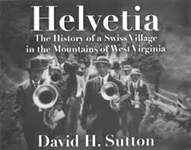
 “Helvetia: The History of a Swiss Village in the Mountains of West Virginia” by David Sutton is available at the Helvetia Library, Helvetia General Store, and the Hutte Restaurant for $25. This is a redesigned, updated, second edition of “One’s Own Hearth is Like Gold: A History of Helvetia, West Virginia” (1990) with additional text and 44 new photos. The book is published by West Virginia University Press and a portion of the proceeds support activites of the Helvetia Restoration and Development Association.” (4:41/2010/ WVU Press)
“Helvetia: The History of a Swiss Village in the Mountains of West Virginia” by David Sutton is available at the Helvetia Library, Helvetia General Store, and the Hutte Restaurant for $25. This is a redesigned, updated, second edition of “One’s Own Hearth is Like Gold: A History of Helvetia, West Virginia” (1990) with additional text and 44 new photos. The book is published by West Virginia University Press and a portion of the proceeds support activites of the Helvetia Restoration and Development Association.” (4:41/2010/ WVU Press)

“The Story of the Helvetia Community”
(An example of “Agricultural Extension Division Community Histories”)

Explore West Virginia A&H’s “Helvetia Community History” Website

“Helvetia, West Virginia, a small village settled in 1869 by Swiss and German immigrants, is located in Randolph County. Its secluded location led to the preservation of traditional dance, music, food, and holidays. It is these traditions that make Helvetia both a great community and destination.”

“The New Deal in West Virginia”
 “West Virginia was especially hit hard by the failing economy of the Great Depression. Some Counties in the state saw unemployment as high as 80 percent. Due to this, then President Franklin D. Roosevelt and his first Lady Eleanor turned their attention to the state to see what relief they could provide. They enacted New Deal legislation that would end up providing housing, jobs and ultimately green spaces for the state all of which can still be seen today. The Second Wave of New Deal Programming saw the further beautification of West Virginia as the Works Progress Administration (WPA) worked to create infrastructure throughout the state, but also saw to arts projects such as Post Office murals, Writer’s programs and Photography programs specifically designed to capture the effects of the Great Depression in West Virginia.”
“West Virginia was especially hit hard by the failing economy of the Great Depression. Some Counties in the state saw unemployment as high as 80 percent. Due to this, then President Franklin D. Roosevelt and his first Lady Eleanor turned their attention to the state to see what relief they could provide. They enacted New Deal legislation that would end up providing housing, jobs and ultimately green spaces for the state all of which can still be seen today. The Second Wave of New Deal Programming saw the further beautification of West Virginia as the Works Progress Administration (WPA) worked to create infrastructure throughout the state, but also saw to arts projects such as Post Office murals, Writer’s programs and Photography programs specifically designed to capture the effects of the Great Depression in West Virginia.”
Explore “West Virginia Historic New Deal Trail” Website (very limited sponsor advertisements)
“West Virginia Historic New Deal / CCC Trail”
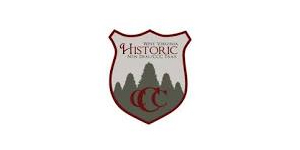 “President Franklin D. Roosevelt implemented the New Deal programs to revitalize the nation’s economy during the Great Depression. Recreation and infrastructure projects provided employment opportunities. Begun in 1933 the Civilian Conservation Corps (CCC), commonly called the “Tree Army,” focused on reforestation and recreation projects. More than 55,000 West Virginia men were enrolled in the CCC and the state had more than 65 camps.”
“President Franklin D. Roosevelt implemented the New Deal programs to revitalize the nation’s economy during the Great Depression. Recreation and infrastructure projects provided employment opportunities. Begun in 1933 the Civilian Conservation Corps (CCC), commonly called the “Tree Army,” focused on reforestation and recreation projects. More than 55,000 West Virginia men were enrolled in the CCC and the state had more than 65 camps.”
<<Also see the MH3WV “Museums” page for the CCC Museum and the “State Parks and Forests” page for New Deal projects in the parks and forests>>
Explore “Historic New Deal / CCC Trail” Brochure – pdf (@2015)
“New Deal Communities” (3)
1 – “Arthurdale” – Preston Co.
“Eleanor’s Little Village”
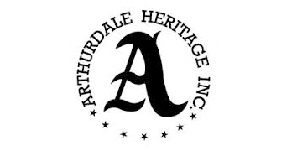
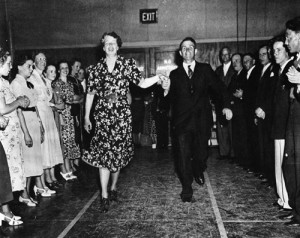 “Revisit the 1930s in Arthurdale, West Virginia. Established in 1933, by the United States government, Arthurdale is the nation’s first New Deal Homestead Community. Created through President Franklin D. Roosevelt’s New Deal legislation, the community provided a new chance at life for residents of West Virginia who were suffering from the Great Depression. First Lady Eleanor Roosevelt served as the empathetic force behind the community, which became known as “Eleanor’s Little Village” because of her interest. Today, Arthurdale is a National Historic District that features 160 of the 165 original homesteads.”
“Revisit the 1930s in Arthurdale, West Virginia. Established in 1933, by the United States government, Arthurdale is the nation’s first New Deal Homestead Community. Created through President Franklin D. Roosevelt’s New Deal legislation, the community provided a new chance at life for residents of West Virginia who were suffering from the Great Depression. First Lady Eleanor Roosevelt served as the empathetic force behind the community, which became known as “Eleanor’s Little Village” because of her interest. Today, Arthurdale is a National Historic District that features 160 of the 165 original homesteads.”
(Photograph of Eleanor Roosevelt Dancing in Arthurdale Courtesy of Franklin D. Roosevelt Library.)
Explore “Arthurdale Heritage” Website
 From West Virginia Tourism: “Arthurdale was the first of 99 New Deal communities built by the federal government during the Depression. Eleanor Roosevelt was deeply involved in planning the community and visited often. The New Deal Homestead Museum consists of 5 original buildings – Administration, Center Hall complex, Forge, Esso Station, and a Homestead house. Personally guided tours are available…”
From West Virginia Tourism: “Arthurdale was the first of 99 New Deal communities built by the federal government during the Depression. Eleanor Roosevelt was deeply involved in planning the community and visited often. The New Deal Homestead Museum consists of 5 original buildings – Administration, Center Hall complex, Forge, Esso Station, and a Homestead house. Personally guided tours are available…”
“Arthurdale’s Houses – Homesteads of the 1930s”
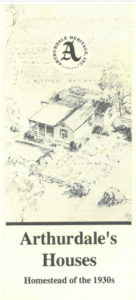 “A brochure including Arthurdale’s Heritage, Visitor Information, History of the Houses, descriptions of Hodgsons Houses, Wagner Houses, and Stone Houses.”
“A brochure including Arthurdale’s Heritage, Visitor Information, History of the Houses, descriptions of Hodgsons Houses, Wagner Houses, and Stone Houses.”
Explore scans of “Arthurdale’s Houses” brochure front (pdf)
Explore scans of “Arthurdale’s Houses” brochure back (pdf)
“Arthurdale – The Unknown Jewel”
“The town of Arthurdale is located in Preston County, WV. This community was started by Eleanor Roosevelt, WVU and the American Friends Service Committee. Arthurdale was the first New Deal Homestead Community and was considered “Eleanors Little Village.” The community was started in the early 1930s and was managed by the government until 1947. The community started with 165 homesteads, of which 160 still remain. The community is now listed as a historical landmark and they have tours throughout the year.” (4:12/2008/Michelle Liga)
2 – “Eleanor” – Putnam Co.
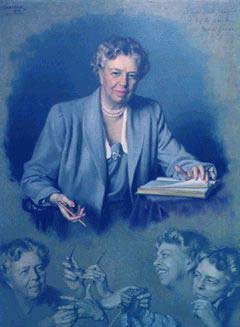
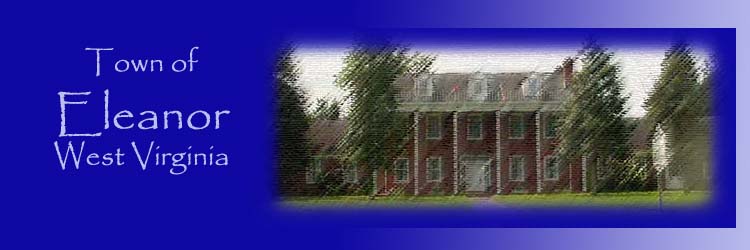 “The decision by the federal government to build a third Homestead Community in West Virginia would ultimately bring this area into national prominence. . .”
“The decision by the federal government to build a third Homestead Community in West Virginia would ultimately bring this area into national prominence. . .”
Explore “Town of Eleanor” Website to continue reading
 From West Virginia Tourism: “In 1934, a total of 150 families were selected for the Town of Eleanor, a community of 2,200 acres. Each house plot was three-quarters of an acre to an acre and provided for a barn, chicken pen, garden and a lawn. Built of cinder blocks, the three to five room homes were designed in several basic styles with an average cost of $1,800 to $2,500. The homes were built by the homesteaders, of which 146 still remain. In 1935, the project name was changed from Red House Farms to Eleanor in honor of the First Lady, who is reported to have made five trips to this project.”
From West Virginia Tourism: “In 1934, a total of 150 families were selected for the Town of Eleanor, a community of 2,200 acres. Each house plot was three-quarters of an acre to an acre and provided for a barn, chicken pen, garden and a lawn. Built of cinder blocks, the three to five room homes were designed in several basic styles with an average cost of $1,800 to $2,500. The homes were built by the homesteaders, of which 146 still remain. In 1935, the project name was changed from Red House Farms to Eleanor in honor of the First Lady, who is reported to have made five trips to this project.”
3 – “Tygart Valley Homesteads” – Randolph Co.
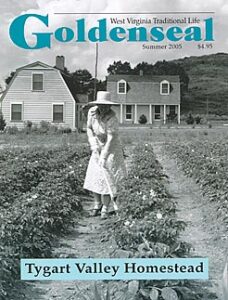 Tygart Valley Homestead Association: “We are a non-profit organization dedicated to the preservation of the integrity of the Tygart Valley Homestead Historic District”
Tygart Valley Homestead Association: “We are a non-profit organization dedicated to the preservation of the integrity of the Tygart Valley Homestead Historic District”
Explore “Tygart Valley Homestead Association” website
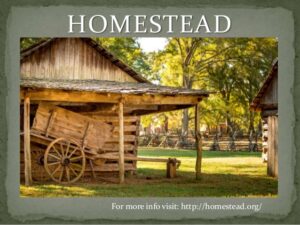 “Two days after Thanksgiving, hospitable Anna Eleanor Roosevelt…motored in a White House car from Washington to visit the Tygart Valley homestead project near Elkins, W. Va. In the evening Mrs. Roosevelt, wearing a plain tailored coat… turned up at a square dance given by local settlers and farmers.” (Time Magazine, Dec 6, 1937)
“Two days after Thanksgiving, hospitable Anna Eleanor Roosevelt…motored in a White House car from Washington to visit the Tygart Valley homestead project near Elkins, W. Va. In the evening Mrs. Roosevelt, wearing a plain tailored coat… turned up at a square dance given by local settlers and farmers.” (Time Magazine, Dec 6, 1937)
 From West Virginia Tourism: “Tygart Valley Homesteads: Dailey, East Dailey and Valley Bend were built in 1934-35 for workers laid off from local mining and lumbering jobs. Successful applicants were selected with “homesteaders” working for credit towards their homes and for actual pay. A new school was constructed and still serves as an elementary school. In Dailey there are several structures extant: trade center, store, post office and fire department. Most homes are found in Valley Bend. At the end of the project, Tygart Valley paid back the initial loans in full to the U.S. government along with a profit from the sale of the lumber mill. Today the community remains largely intact with descendents of many homesteaders still living in the communities, although infill homes have sprung up on the once 2-3 acre homesteads.”
From West Virginia Tourism: “Tygart Valley Homesteads: Dailey, East Dailey and Valley Bend were built in 1934-35 for workers laid off from local mining and lumbering jobs. Successful applicants were selected with “homesteaders” working for credit towards their homes and for actual pay. A new school was constructed and still serves as an elementary school. In Dailey there are several structures extant: trade center, store, post office and fire department. Most homes are found in Valley Bend. At the end of the project, Tygart Valley paid back the initial loans in full to the U.S. government along with a profit from the sale of the lumber mill. Today the community remains largely intact with descendents of many homesteaders still living in the communities, although infill homes have sprung up on the once 2-3 acre homesteads.”
“The Living New Deal”

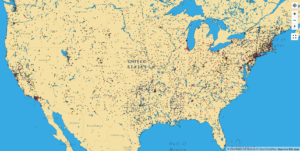 “The mission of the Living New Deal is three-fold: research, presentation and education. It begins with the historical work of uncovering the immense riches of New Deal public works. That research is then made available to all through digital mapping and a website that serves as a clearinghouse for information on the New Deal. And, finally, the information gained from our work is disseminated as widely as possible through newsletters, social media, written media, interviews, lectures and other public events.”
“The mission of the Living New Deal is three-fold: research, presentation and education. It begins with the historical work of uncovering the immense riches of New Deal public works. That research is then made available to all through digital mapping and a website that serves as a clearinghouse for information on the New Deal. And, finally, the information gained from our work is disseminated as widely as possible through newsletters, social media, written media, interviews, lectures and other public events.”
- “We’ve mapped more than 17,000 sites and now have more than 100 sites documented in every state.”
- “Learn about key successes of the New Deal in economic and wage growth, decreased unemployment, public works, human welfare, and more.”
- “In the midst of Depression, the New Deal put millions to work, gave the nation hope, and left a vast legacy of public works still serving America today.”
- “The New Deal did a great deal of good in overcoming the exclusion of neglected, oppressed and marginalized people in American life.”
Explore “The Living New Deal” Website
Explore The Living New Deal’s “Projects in West Virginia” Website
“National New Deal Preservation Association”
“The Legacy of the New Deal”

 “FDR made it possible for many of our family members to survive during the Great Depression and to create New Deal treasures all over this nation that we are still using and enjoying today. You may not know what they are. It can include such things in your town, city, county or state like schools and other public buildings, parks, roads, bridges, cemeteries, swimming pools, water and sewer systems, rural electricity, murals, paintings, sculptures, and even symphonic orchestras. Many of today’s legal rights for labor were established in the New Deal era. The FDIC protects your bank account, and Social Security is possibly critical to you and your family.”
“FDR made it possible for many of our family members to survive during the Great Depression and to create New Deal treasures all over this nation that we are still using and enjoying today. You may not know what they are. It can include such things in your town, city, county or state like schools and other public buildings, parks, roads, bridges, cemeteries, swimming pools, water and sewer systems, rural electricity, murals, paintings, sculptures, and even symphonic orchestras. Many of today’s legal rights for labor were established in the New Deal era. The FDIC protects your bank account, and Social Security is possibly critical to you and your family.”
“Bramwell” – Mercer Co.
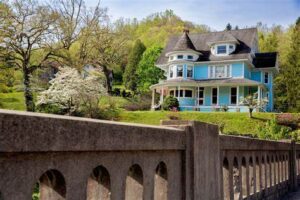
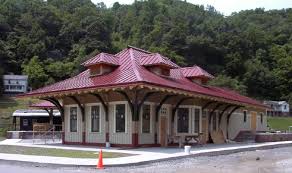 “Bramwell is a West Virginia Historic Town on a peninsula of the Bluestone River – founded 1888. The town reflects large fortunes amassed by local coal barons and is renowned for having an abundance of well preserved Victorian and Tudor style mansions. Around the turn of the century fourteen millionaires resided here during the town’s heyday. Bramwell offers self-guided walking tours and pre-arranged group tours that are highlighted by Spring and Christmas historic home tours.”
“Bramwell is a West Virginia Historic Town on a peninsula of the Bluestone River – founded 1888. The town reflects large fortunes amassed by local coal barons and is renowned for having an abundance of well preserved Victorian and Tudor style mansions. Around the turn of the century fourteen millionaires resided here during the town’s heyday. Bramwell offers self-guided walking tours and pre-arranged group tours that are highlighted by Spring and Christmas historic home tours.”
Explore “Historic Bramwell” Website
 “Tucked away in the hills of southern West Virginia is a tiny town with a huge history. Bramwell, located 8 miles north of Bluefield, WV, is known as the “Home of the Millionaires.” Settled in the early 1800s the area was surrounded by massive coal deposits. As the coal was mined, the operators began to build grand homes in Bramwell. The town became known as the richest town for its size at the turn of the 20th century.”
“Tucked away in the hills of southern West Virginia is a tiny town with a huge history. Bramwell, located 8 miles north of Bluefield, WV, is known as the “Home of the Millionaires.” Settled in the early 1800s the area was surrounded by massive coal deposits. As the coal was mined, the operators began to build grand homes in Bramwell. The town became known as the richest town for its size at the turn of the 20th century.”
Explore “Bramwell Theatre Foundation” Website
“Bramwell, West Virginia”
“Bramwell, West Virginia was a residential paradise, wealthy coal barons could live in luxury. They could enjoy a fabulous social life among their wealthy neighbors. There were plenty of merchants, ministers, doctors, attorneys and others that supported their lifestyle. In the late 1800s, Bramwell had electric street lights, a weekly newspaper, a water company, and even telephone service.” (8:10/2007/Dan Traveling)
“Coalwood” – McDowell Co.
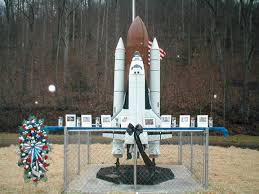 “World famous as the site of Homer Hickam, Jr.’s, book “Rocket Boys” and the film “October Sky,” the McDowell County community of Coalwood is featured in an article, “Historic Coalwood,” in the summer [2001] issue of Goldenseal magazine.
“World famous as the site of Homer Hickam, Jr.’s, book “Rocket Boys” and the film “October Sky,” the McDowell County community of Coalwood is featured in an article, “Historic Coalwood,” in the summer [2001] issue of Goldenseal magazine.
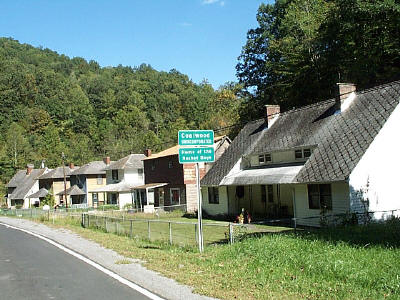 “The article, which was written by noted West Virginia coal historian Stuart McGehee, is an insightful account of the rise and fall of this historic coal company town. McGehee traces Coalwood’s history from its founding in 1902 as a company town for the Carter Coal & Coke Company, through its rise to national recognition as a model mining community in the early 1930s, to its gradual decline due to mechanization and global competition.”
“The article, which was written by noted West Virginia coal historian Stuart McGehee, is an insightful account of the rise and fall of this historic coal company town. McGehee traces Coalwood’s history from its founding in 1902 as a company town for the Carter Coal & Coke Company, through its rise to national recognition as a model mining community in the early 1930s, to its gradual decline due to mechanization and global competition.”
Explore “Coalwood” Website – limited advertisements
Trivia: If you rearrange the letters in “Rocket Boys” (the book title) you get “October Sky” (the movie title)
“Coalwood, West Virginia”
“We visited the annual October Sky Festival, or the Rocket Boys Reunion as it is known up there in Coalwood West Virginia. For those that aren’t familiar with this event, it is an annual reunion of folks from Coalwood , the folks from the movie October Sky, and the actual Rocket Boys themselves. Our visit includes segments of Homer Hickam signing autographs, Homer is the best selling Author of The Rocket Boys, later made into a movie by Joe Johnson called October Sky (the one with Jake Gyllenhaal and Laura Dern) also Scott Miles, who played Homer’s (Jake’s) older brother in the movie there were also NASA astronauts, Virginia Tech Students, children with rockets from all over and the townsfolk as well.” (9:58/2007 / Dan Traveling)
“International Mother’s Day Shrine” – Taylor Co.
“The International Mother’s Day Shrine and Museum will preserve, promote and develop through education, the Spirit of Motherhood, as exemplified by the lives of Ann Maria Reeves Jarvis and Anna Jarvis, and the institution of Mother’s Day that they established.”
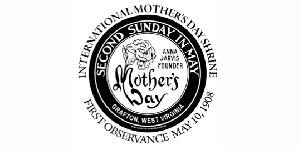 “The first Mother’s Day service was celebrated on May 10, 1908. The second Sunday of May was proclaimed as Mother’s Day by a proclamation issued April 26, 1910 by West Virginia Governor William E. Glasscock. On May 15, 1962, the magnificent Andrews Church, built in 1873, was declared to be The International Mother’s Day Shrine perpetuity as an international shrine to all mothers and as a memorial to Anna Jarvis, founder of Mother’s Day.”
“The first Mother’s Day service was celebrated on May 10, 1908. The second Sunday of May was proclaimed as Mother’s Day by a proclamation issued April 26, 1910 by West Virginia Governor William E. Glasscock. On May 15, 1962, the magnificent Andrews Church, built in 1873, was declared to be The International Mother’s Day Shrine perpetuity as an international shrine to all mothers and as a memorial to Anna Jarvis, founder of Mother’s Day.”
Explore “International Mother’s Day Shrine” Website
“Anna Jarvis and the History of Mother’s Day” – West Virginia Public Broadcasting
“May 11, 2008, was the 100th Anniversary of Mother’s Day. The holiday began in Grafton. Emily Corio has more on the West Virginia connection to Mother’s Day, and how the person who started it all later lamented what the holiday turned into.” (4:29/2008 / WV Public Broadcasting)
“Pearl S. Buck Birthplace” – Pocahontas Co.
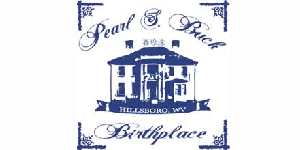
“Located in the heart of the Appalachian Mountains, The Pearl S. Buck Birthplace showcases the home where the Nobel Prize-winning author was born in 1892. The museum is dedicated to celebrating the influence that the home and West Virginia lifestyle had on Pearl and how it shaped some of her major work throughout her life. Known as one of the voices of her generation, many people don’t know that her life began in a modest home located in Pocahontas County, West Virginia. The site, a National Historical Site located in the town of Hillsboro, features a modest two-story, hand-built, home where the author was born. Beloved by millions of readers, THE GOOD EARTH, has been one of the most popular novels of this century since its publication in 1931. The book won the Pulitzer Prize and the William Dean Howells medal for fiction. For over 30 years, Pearl S. Buck’s novel played a major role in shaping Western attitudes toward China.”
Explore Pocahontas County CVB’s “Pearl S. Buck Birthplace” Website
“Historic Partnership Brings Priceless Pearl S. Buck Collection to WVU”
“West Virginia University, West Virginia Wesleyan College and the Pearl S. Buck Birthplace Foundation formed a partnership to preserve and disseminate the legacy of Pearl S. Buck. As part of that agreement, a priceless collection of literary manuscripts by Buck will be housed at the WVU Libraries.” (3:29/2014 / WVU) (Video includes scenes from the Pearl S. Buck Birthplace.)
“Nancy Hanks Birthplace” – Mineral Co.
“The cabin is a replica of the original, in which Nancy Hanks was born, on February 5, 1784.
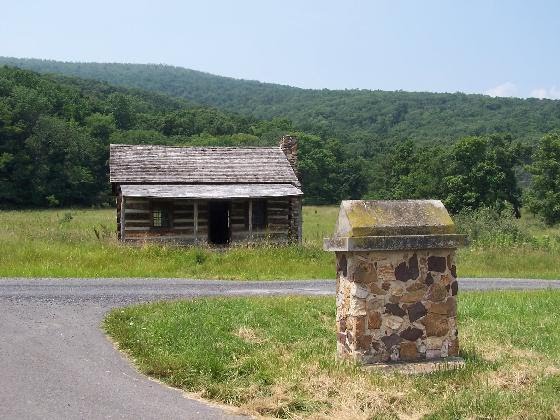 “Across the street from the cabin, there’s a small plaque on a stone pillar. It’s the only thing on the property that explains who Nancy Hanks was. She married a carpenter named Thomas Lincoln in 1806 and Abraham was the second of her children, born in 1809. Nancy died in 1818, when Abraham was only nine years old, from “milk sickness,” caused by drinking tainted milk from a cow that had eaten poisonous white snakeroot.”
“Across the street from the cabin, there’s a small plaque on a stone pillar. It’s the only thing on the property that explains who Nancy Hanks was. She married a carpenter named Thomas Lincoln in 1806 and Abraham was the second of her children, born in 1809. Nancy died in 1818, when Abraham was only nine years old, from “milk sickness,” caused by drinking tainted milk from a cow that had eaten poisonous white snakeroot.”
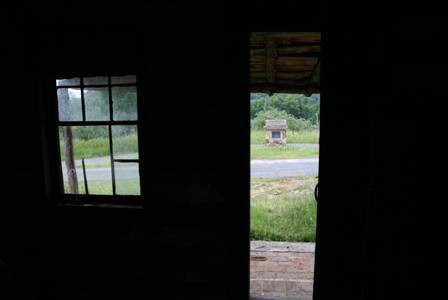 “Nancy Hanks was born on February 5, 1784, in Hampshire County, Virginia in a log cabin along Mike’s Run at the foot of New Creek Mountain in what is now Mineral County, West Virginia. Nancy grew up to marry Thomas Lincoln. One of Nancy and Thomas’s sons, Abraham Lincoln, became the 16th President of the United States. The site of Nancy’s birth has been marked by the Nancy Hanks Association, which placed a simple stone monument to mark the spot in 1933. Near the monument is a reconstructed log cabin, like the one in which Nancy Hanks was born.”
“Nancy Hanks was born on February 5, 1784, in Hampshire County, Virginia in a log cabin along Mike’s Run at the foot of New Creek Mountain in what is now Mineral County, West Virginia. Nancy grew up to marry Thomas Lincoln. One of Nancy and Thomas’s sons, Abraham Lincoln, became the 16th President of the United States. The site of Nancy’s birth has been marked by the Nancy Hanks Association, which placed a simple stone monument to mark the spot in 1933. Near the monument is a reconstructed log cabin, like the one in which Nancy Hanks was born.”
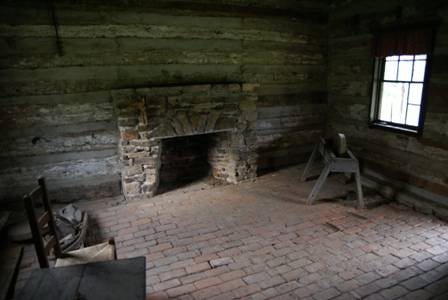 “The site is well off the beaten path. To find it, follow the signs which point off U.S. 220, just a few miles south of the Maryland/West Virginia state line in northeastern West Virginia. You will take a narrow, winding road through the mountains for more than six miles to find the memorial on a dead end one lane road, in a beautiful remote rural area. On one side of the road is the stone monument with a brass plaque, and on the other is the log cabin. When I was there the cabin was open, however the site is unattended and there are no interpretative displays.”
“The site is well off the beaten path. To find it, follow the signs which point off U.S. 220, just a few miles south of the Maryland/West Virginia state line in northeastern West Virginia. You will take a narrow, winding road through the mountains for more than six miles to find the memorial on a dead end one lane road, in a beautiful remote rural area. On one side of the road is the stone monument with a brass plaque, and on the other is the log cabin. When I was there the cabin was open, however the site is unattended and there are no interpretative displays.”
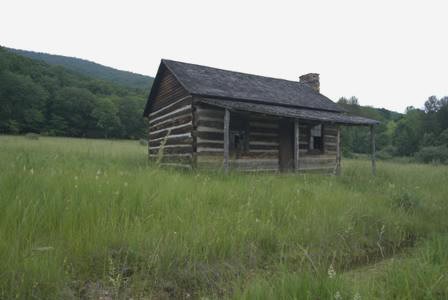 “I found it moving to stand alone in this in this quite, out-of-the-way spot and contemplate the life of the remarkable woman who gave birth to one of Americas most controversial leaders. . .”
“I found it moving to stand alone in this in this quite, out-of-the-way spot and contemplate the life of the remarkable woman who gave birth to one of Americas most controversial leaders. . .”
– J. Stephen Conn on May 22, 2011
Explore WVGenweb’s “Nancy Hanks Birthplace” Website
“Craik – Patton House” – Kanawha Co.

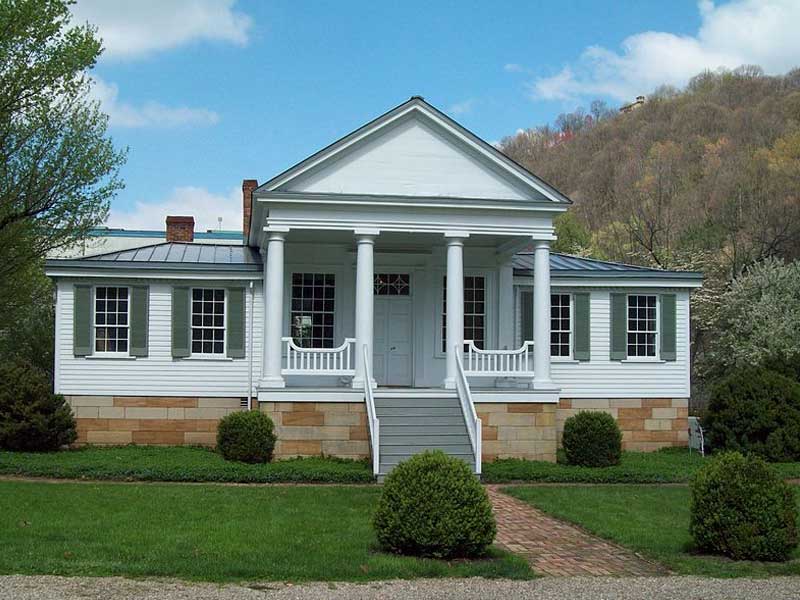 “Listed on the National Register of Historic Places, The Craik – Patton House is a splendid example of Greek Revival architecture in the Kanawha River Valley of West Virginia. Constructed in 1834, the Craik- Patton House or “Elm Grove” as it was known then, was built in downtown Charleston, Virginia, now West Virginia, by James Craik, grandson of Dr. James Craik – close friend and personal physician to President George Washington. Later, the home was purchased by Confederate Colonel George S. Patton I, grandfather of WWII General George S. Patton. It was saved by the National Society of Colonial Dames of America in the State of West Virginia (NSCDA-WV) and moved to its current location in 1973.”
“Listed on the National Register of Historic Places, The Craik – Patton House is a splendid example of Greek Revival architecture in the Kanawha River Valley of West Virginia. Constructed in 1834, the Craik- Patton House or “Elm Grove” as it was known then, was built in downtown Charleston, Virginia, now West Virginia, by James Craik, grandson of Dr. James Craik – close friend and personal physician to President George Washington. Later, the home was purchased by Confederate Colonel George S. Patton I, grandfather of WWII General George S. Patton. It was saved by the National Society of Colonial Dames of America in the State of West Virginia (NSCDA-WV) and moved to its current location in 1973.”
Explore the current “Craik-Patton House” Website
Explore information from a previous version of the “Craik-Patton House” Website (pdf)
